One of the benefits of an extended deployment is the opportunity to take a mid-tour holiday. So, since I was able to get a flight anywhere in the world, Anna and I decided to visit the Southern tip of Africa. South Africa offered the perfect blend of adventure, relaxation, and exceptional flora and fauna. So, over the next 7 posts, I will take you on our journey. Why so many posts?? Well, I went a little crazy with the camera, so I was only able to pare down the 2,000 images to just over 200. Hopefully, you will find them interesting. It was certainly an interesting trip for us!
South Africa is a unique country. Its varied history and culture made a lasting impression on us. In fact, in many ways it felt like a blend of Europe, “typical” sub-Saharan Africa, and even a little bit of Afghanistan. So, almost needless to say, we really enjoyed our two weeks there.
We spent most of our time in what was founded as refreshment station in 1652 by the Dutch East India Company, now known as Cape Town. Upon arrival, we promptly headed to the beach.
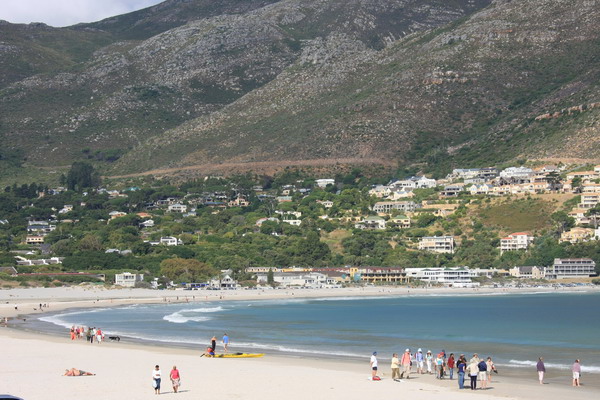
This is just one of the many beautiful spots that dot the coastline in and near Cape Town.
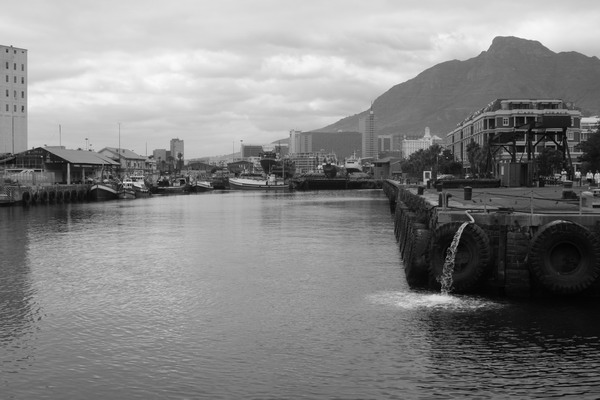
This is down at the Victoria and Alfred Waterfront in the City Bowl (read: downtown Cape Town). Yes, that is a reference to the British monarch. But, if you recall, Albert was Queen Victoria’s husband. Alfred was her son. Since they are both credited with positive influence on Cape Town in the mid-19th century, the names of Victoria and Alfred are commemorated.
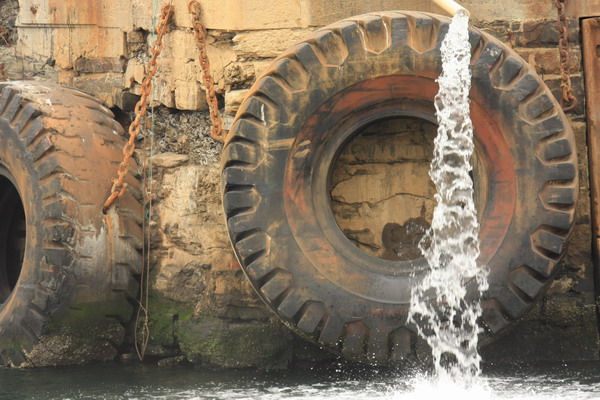
V&A Waterfront again.
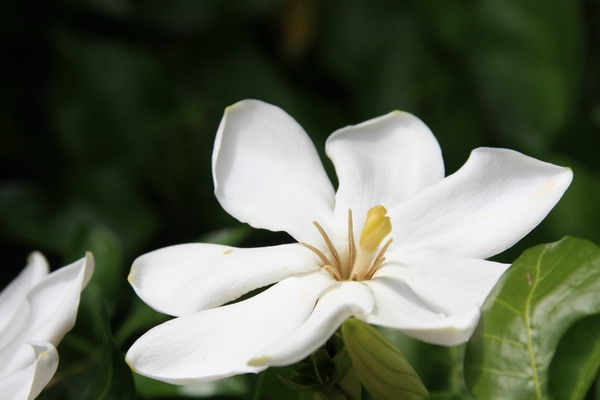
We also stopped by the Kirstenbosch National Botanical Gardens. These beautiful grounds were donated by Cecil Rhodes in 1902. In case you’re not familiar with him, Rhodes was born in Great Britain, and had a profound impact on Southern Africa. Although his political and social views are debatably bad, there is no question, he accomplished a lot in his relatively short life. Just a few of his accomplishments include:
1. Founding De Beers company, which is now the largest diamond mining company in the world.
2. Beginning the Rhodes Scholarship, the most prestigious graduate school scholarship in the world, and what my friend Tom was awarded to attend the University of Oxford (where all recipients study).
3. Creating the country of Rhodesia, now known as Zimbabwe.
So, suffice it to say, the man was influential.
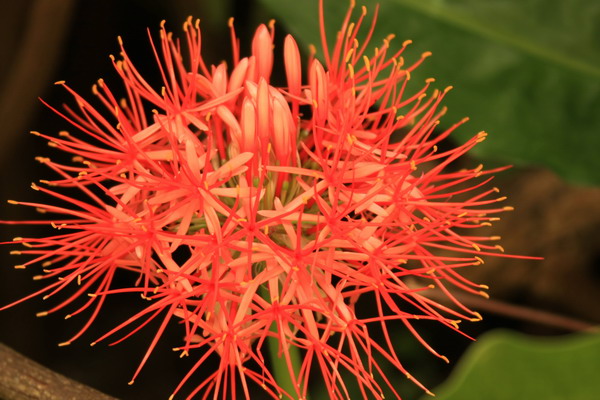
This flower is interestingly known as the blood flower, and looks like a ball of fire.
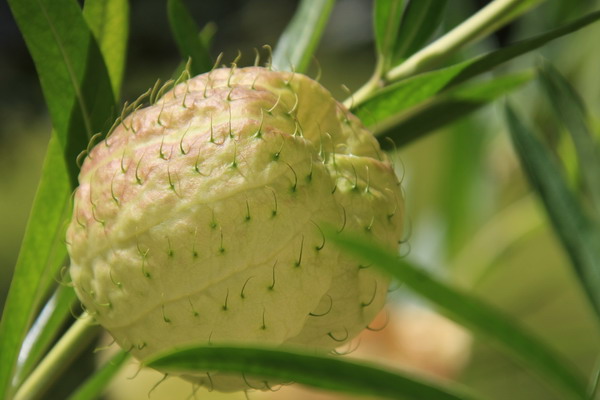
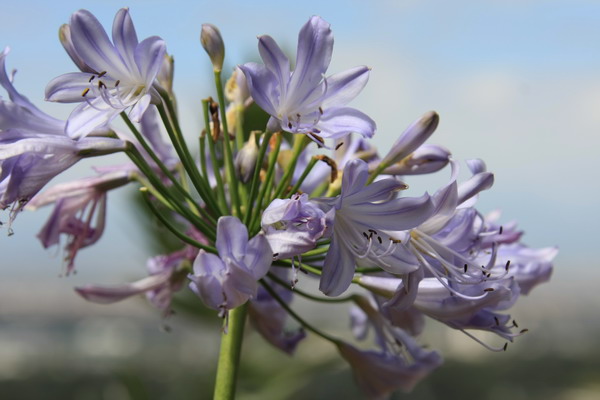
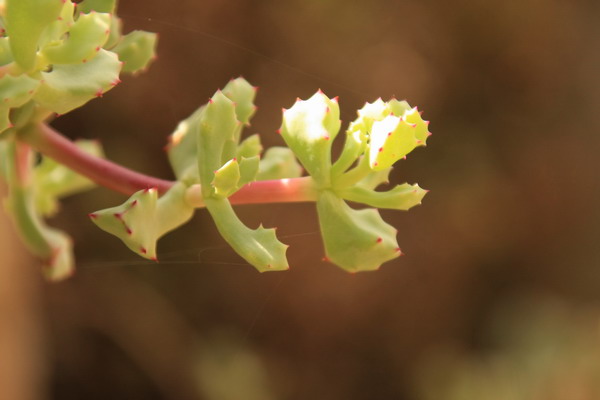
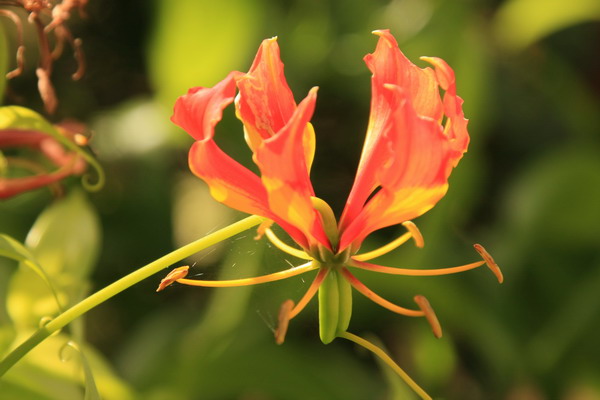
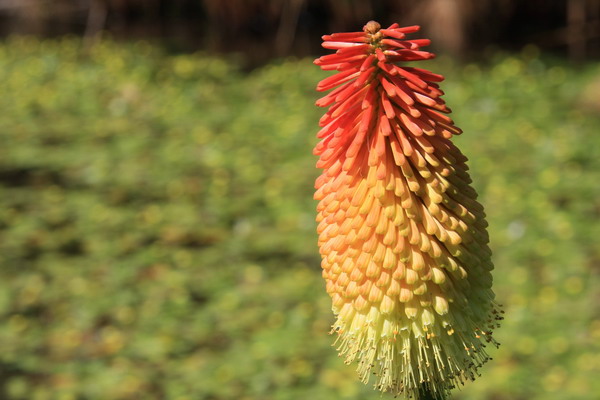
An aloe flower.
Unfortunately, the national flower of South Africa, the Protea, was not in bloom, so I don’t have any images of that unique flower to share.

A Helmeted Guinea Fowl.

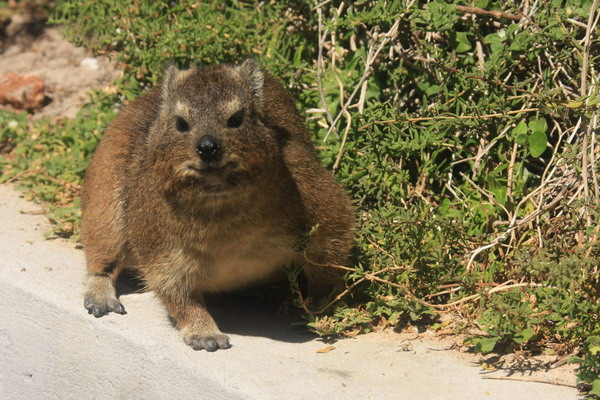
This is a Rock Hyrax, also known as a Dassie. It’s found throughout Africa and didn’t seem to mind too much that a camera was stuck right in front of it. Interestingly, they are closely related to elephants.
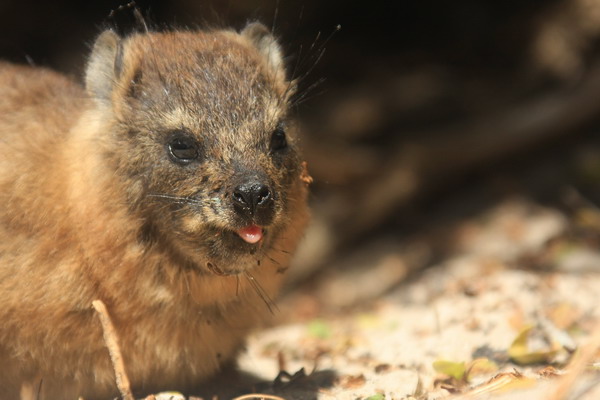
Cute, huh?
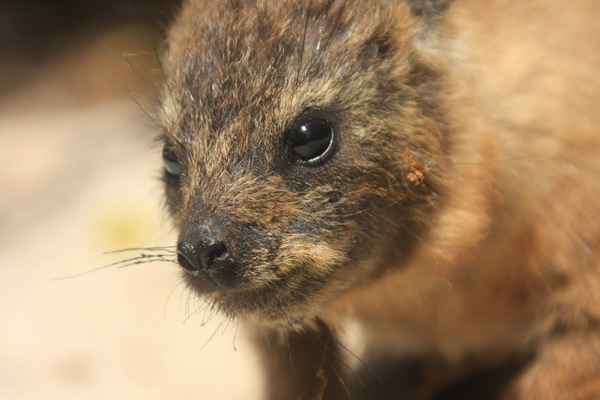

We also spent some time going through the vineyards of South Africa. It was an interesting contrast with European wineries. The wines produced here are very tasty and the two best (in our opinion) are Sauvignon Blanc and Pinotage. The Pinotage is a cross grape that is unique to South Africa and stems from the Hermitage and Pinot Noir grapes.
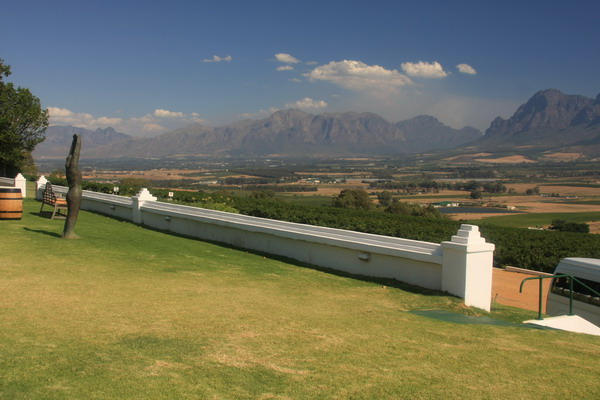
Another winery, with an amazing view. The Stellenbosch, Franschhoek, and Paarl are no more than an hour outside of Cape Town. Combined with Constantia just outside of Cape Town, they make up the wineland region of Cape Town. We ended up spending our last few days in Franschhoek, but I’ll talk about that in my last post.
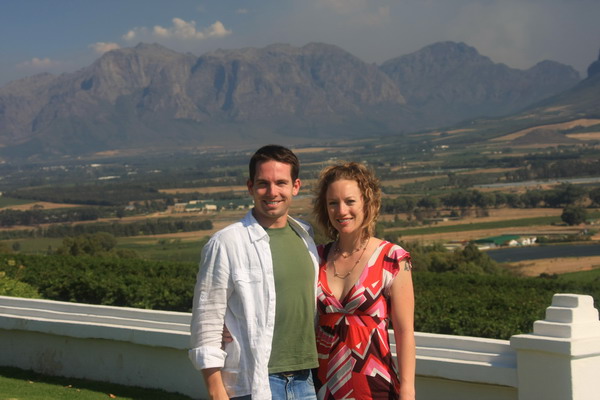
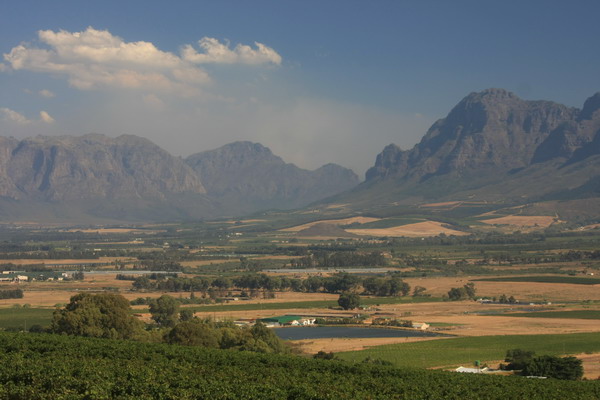
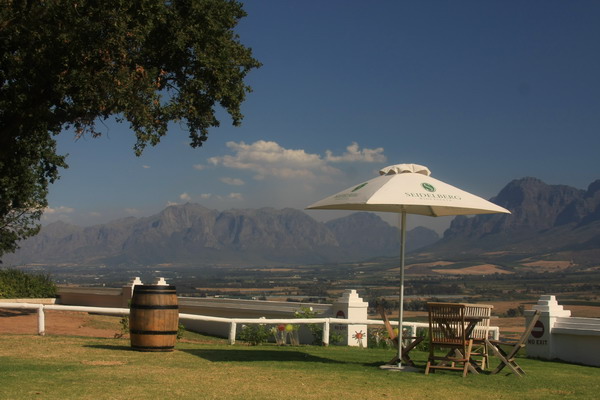
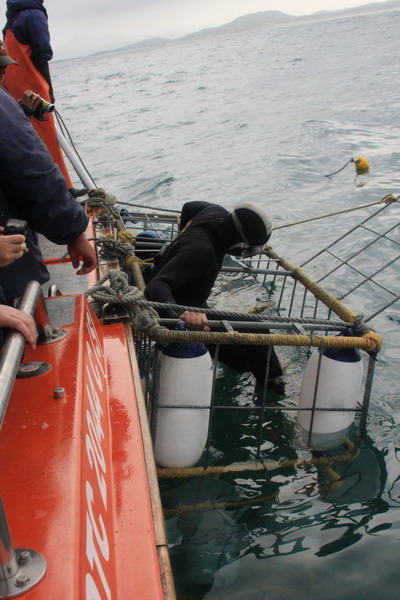
In contrast to the peaceful winelands, we also ventured into the occasionally tempestuous sea. In this case, it was to get up close and personal with a Great White shark. These misrepresented hunters are often found in the waters near Cape Town.
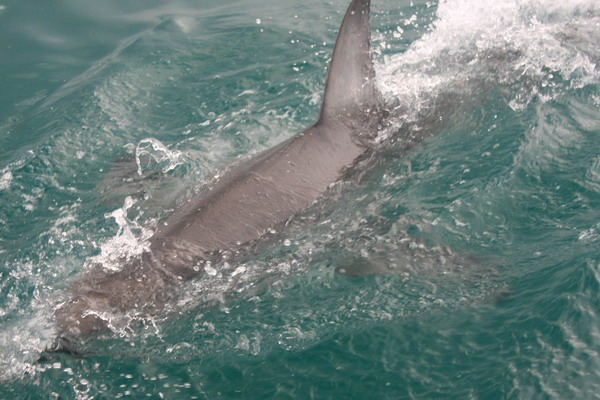
The sharks would follow the bait fish in very close to the cage.
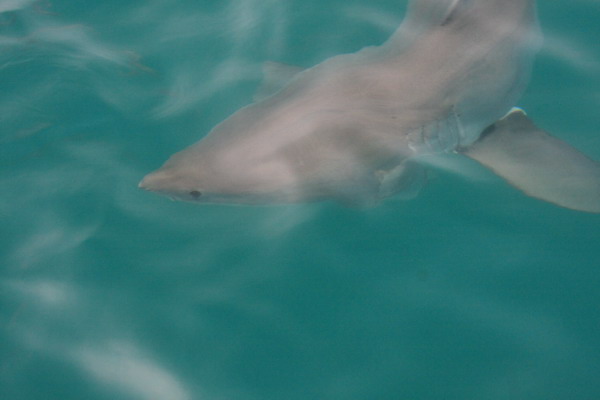
These creatures are magnificent. They are so majestic and each one has a unique personality.
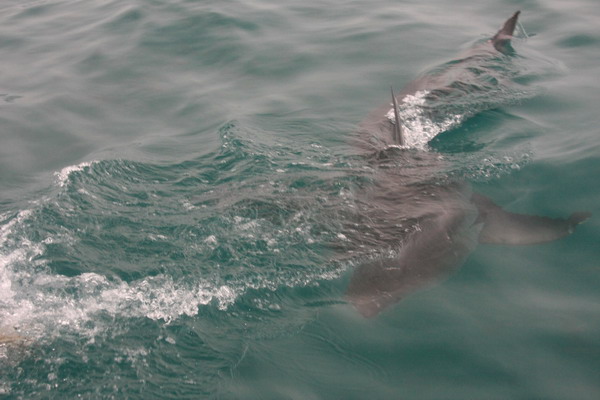
We were fortunate and saw 4 different white sharks. Gansbaai and shark alley has the most densely populated white shark population in the world. Something that the movie Jaws got wrong was the tail fin. As you can see, both the dorsal fin and tail are out of the water when the sharks are on the surface.
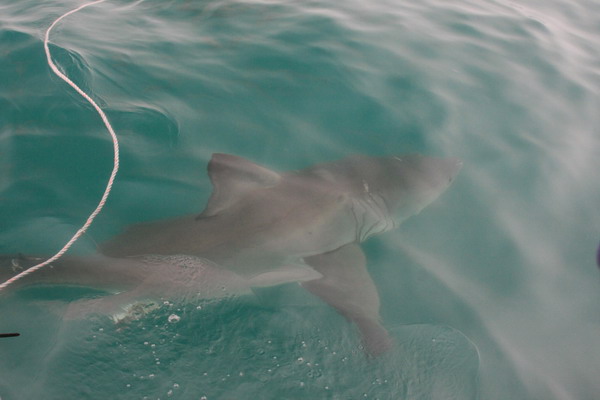
Although these weren’t the largest white sharks (~3 meters), they are still very cool.
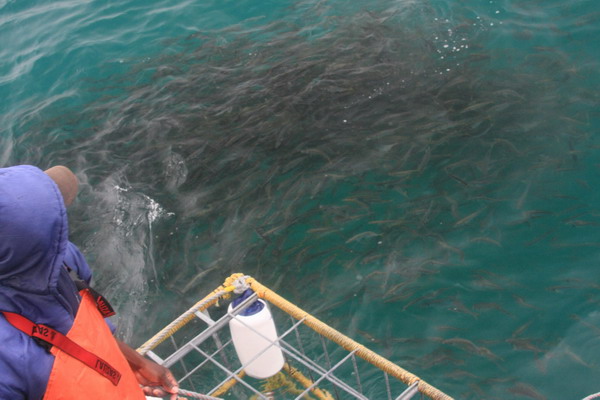
Here you can see the bait fish and chum in the water.
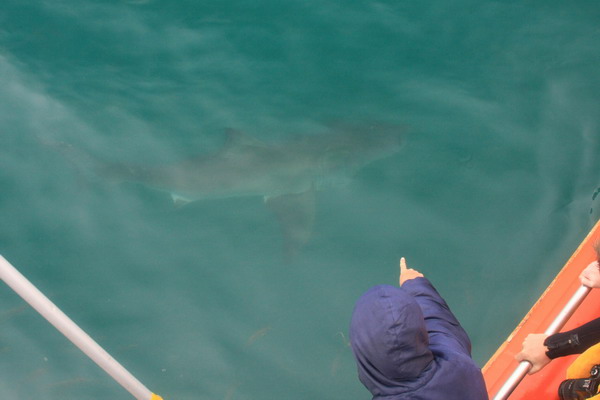
Look! There’s one!
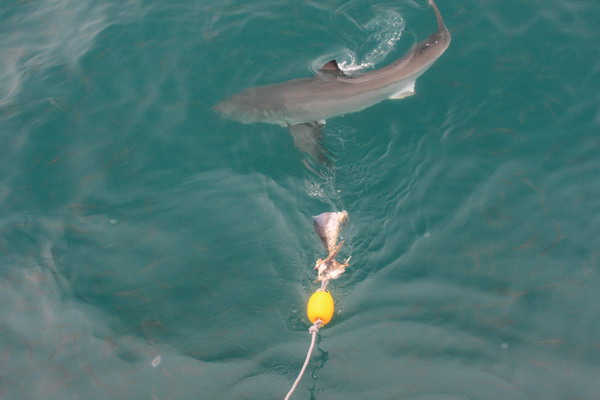
The tuna bait coming in, but the shark turned away.
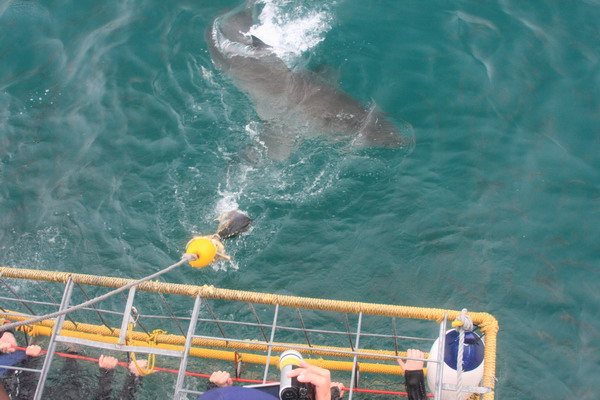
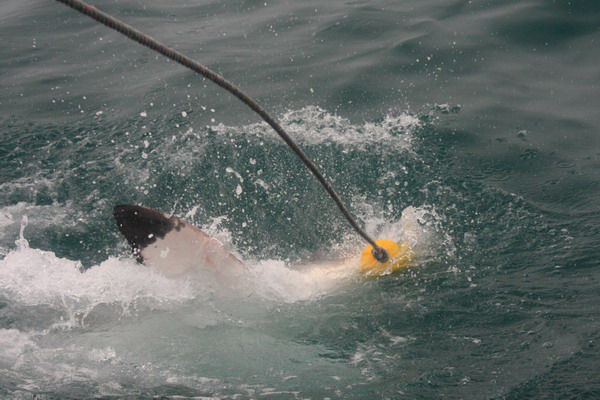
Although the sharks are more active in the winter (we were there in the late summer), this one attacked from below. Unfortunately, as you can see, I was a moment too slow.
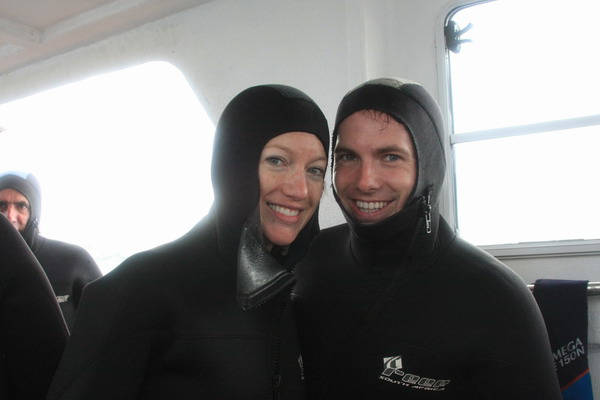
The water was a bit cold (11 degrees Celsius), so the 7mm wetsuits kept us nice and toasty. Ok, if not toasty, at least somewhat comfortable.
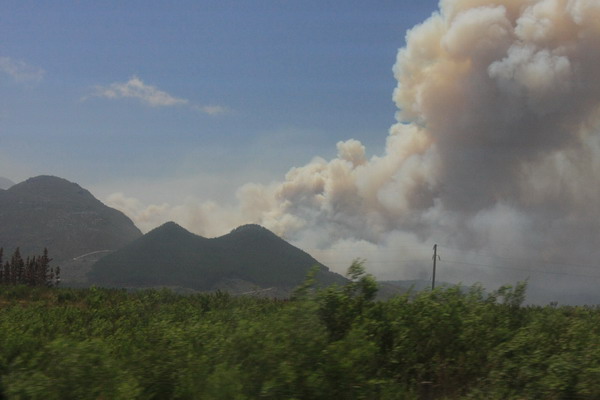
On the way back to Cape Town (it was a couple hours east), we saw the massive wildfires plaguing the area.
That covers the first part of our Cape Town experience. Next, we visited a large colony of African Penguins, then went up to Kruger National Park for a 5 day safari, and finished our trip with more time in and around Cape Town. Those posts are forthcoming.
So, until then…
–Jim
Category: Trips
Afghanistan — Month Three (Part 2)
I know it has been too long since my last post. So, here is the continuation of the post from last month. They are from Kapisa and represent my experiences there in January and February.
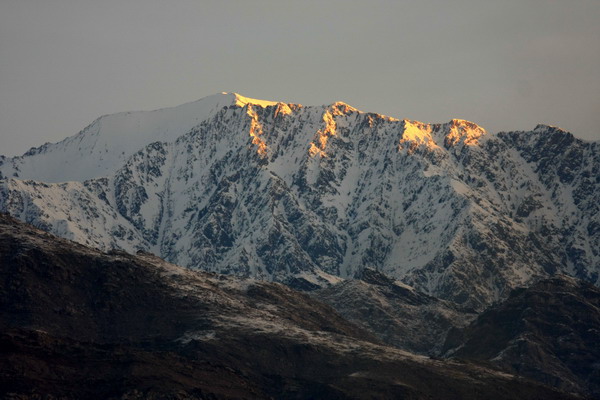
The mountains are truly breath taking. Although much of the snow has melted now, it’s still very pretty.
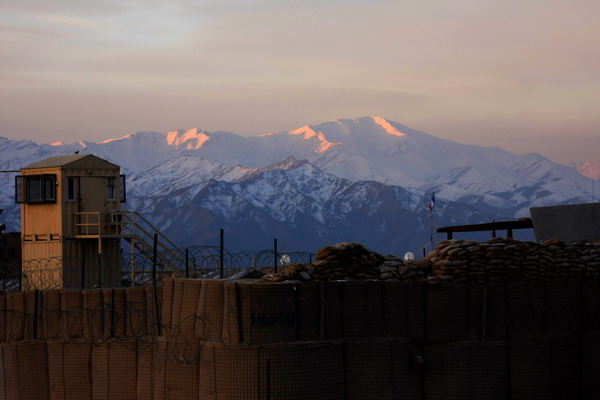
This is the sunrise one morning before we left on a mission.
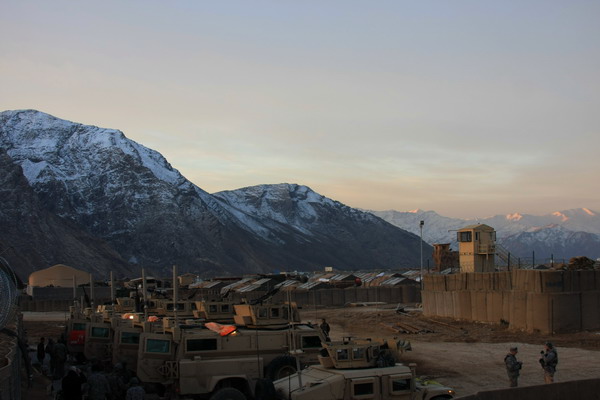
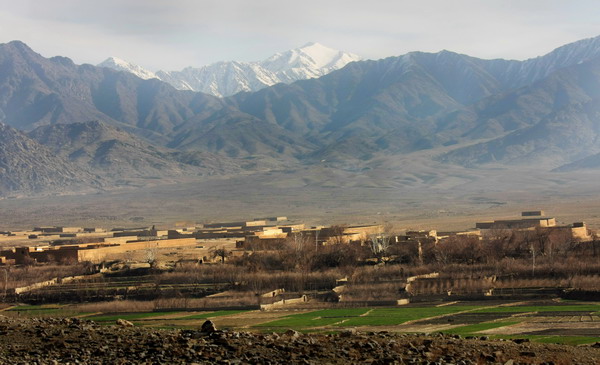
Here is a typical village in southern Kapisa.
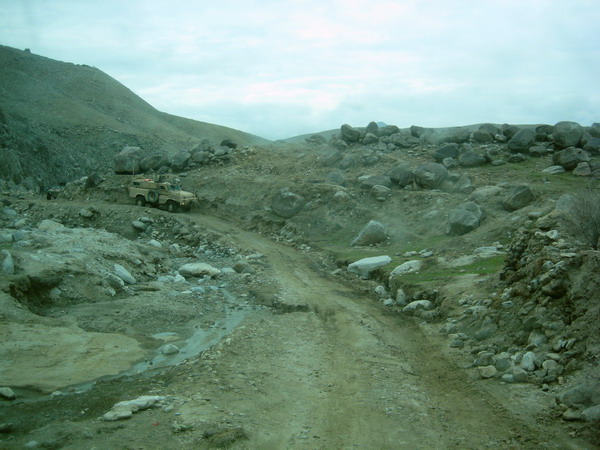
This road/trail is an example of the kind of starting point we have for road projects. As you can see, it was in very rough shape, but is representative of the rural roads in Afghanistan. We won’t make this road into a highway, but we hope to (at least) enable two-way traffic at speeds greater than 10kph.
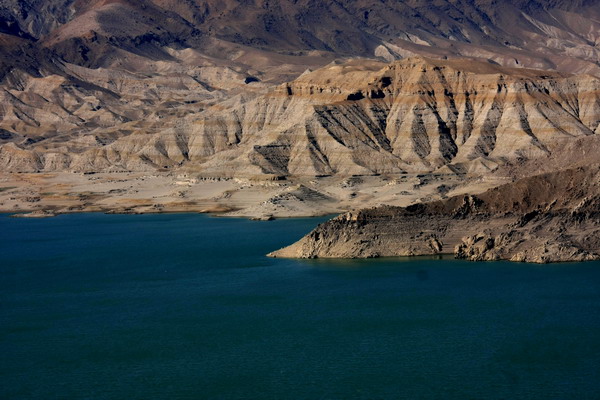
This is the Naghlu Reservoir, which reminds me of some places the Western US.
The Lakehouse.
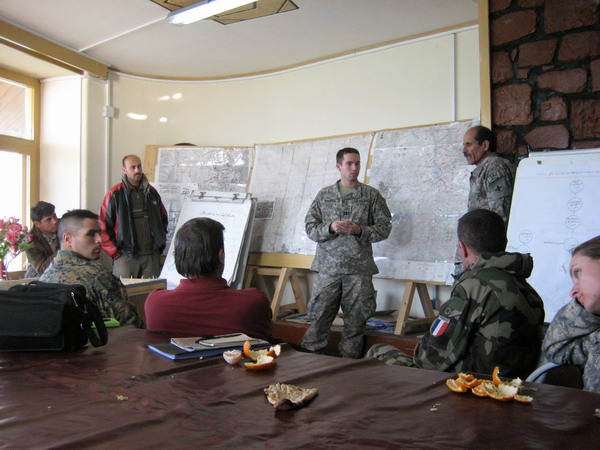
We have many meetings to make sure everyone understands what the plan is. In this case, that requires three languages: English, Dari and French.
The reservoir again.
Another view out of the Lakehouse.
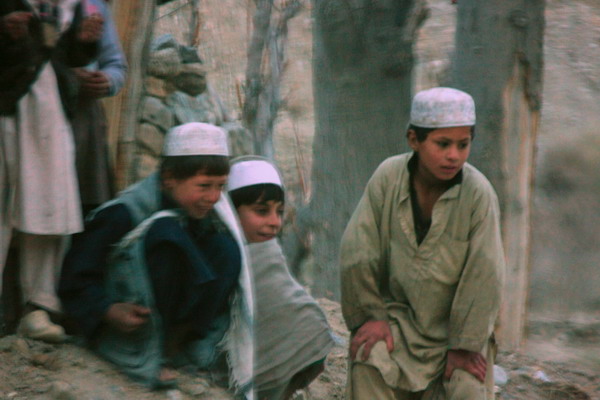
These boys were very interested in what we were doing.
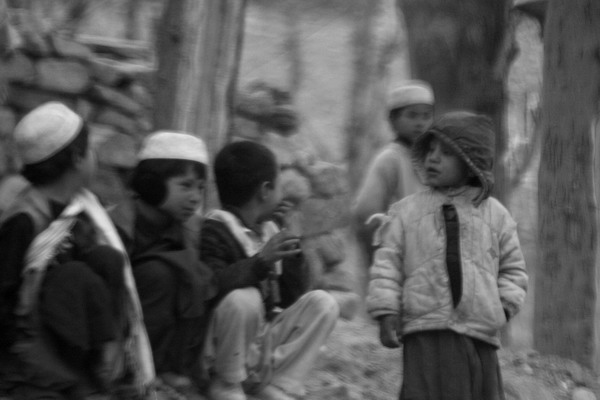
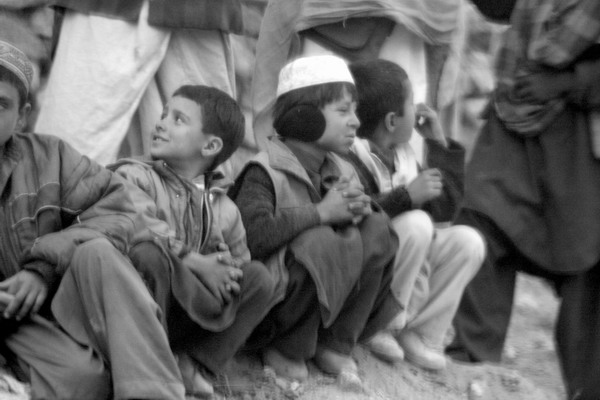
They had a good time hanging out and chatting.
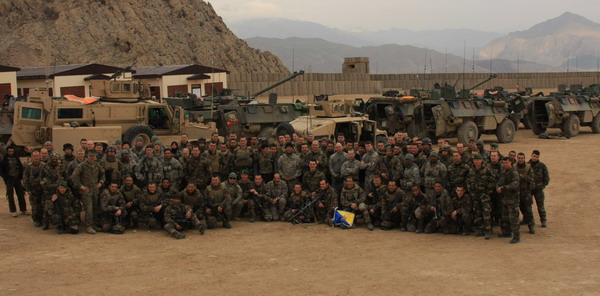
This is the coalition team that we went with. As you can see, it’s American and French.
The guys.
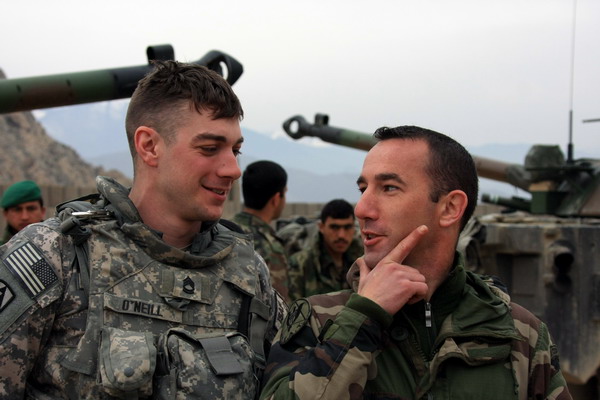
Terry and a French civil-military Captain whose job for the French Army is very similar to what we do for the US. Fortunately, our organizations have a great relationship which allows us to work well together.
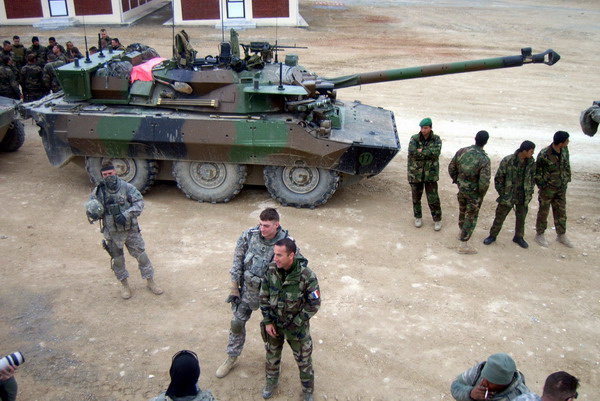
This is the same scenario, from a different perspective. In fact, you can see me in the lower left corner.
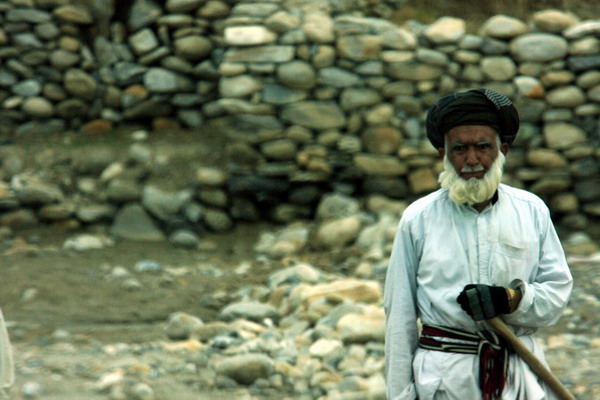
I love this man’s beard.
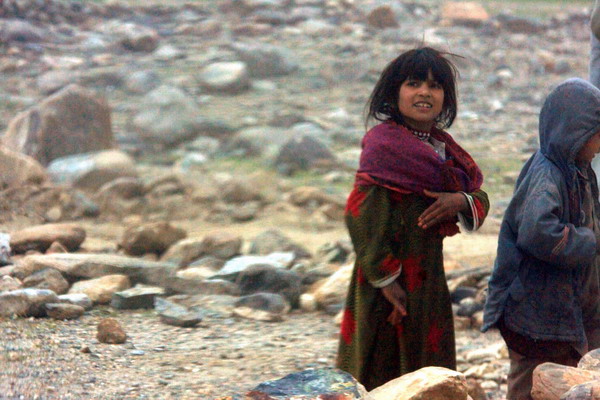
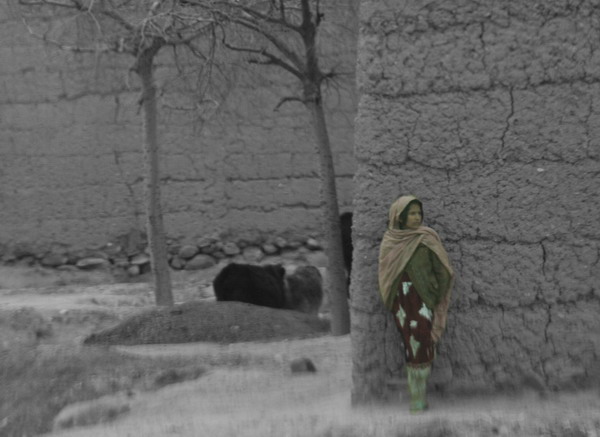
The green girl.
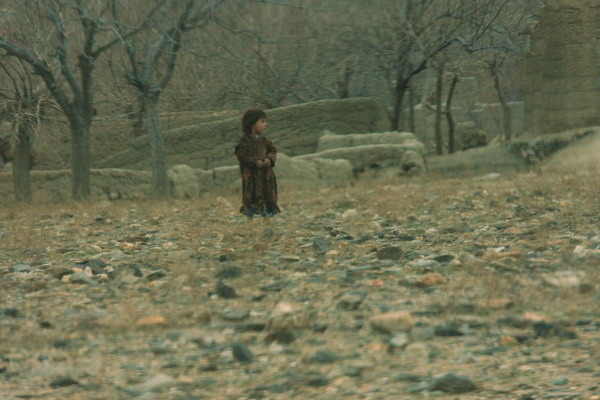
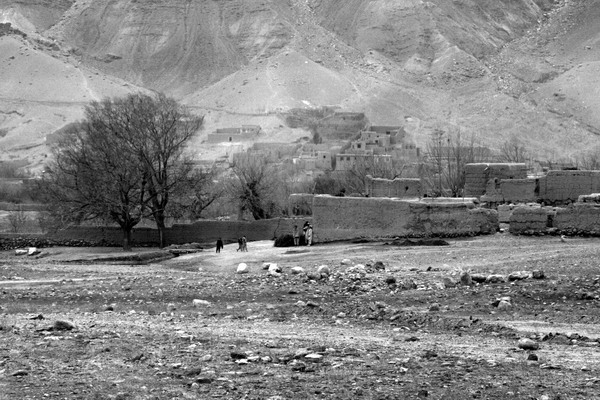
Another typical southern Kapisa image.
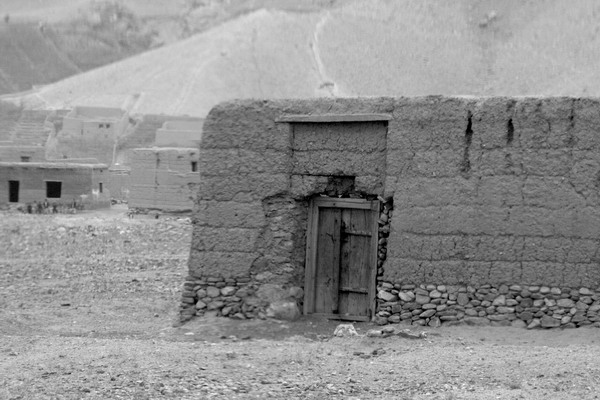
I always find the doors interesting here. It seems to be the architectural focal point.
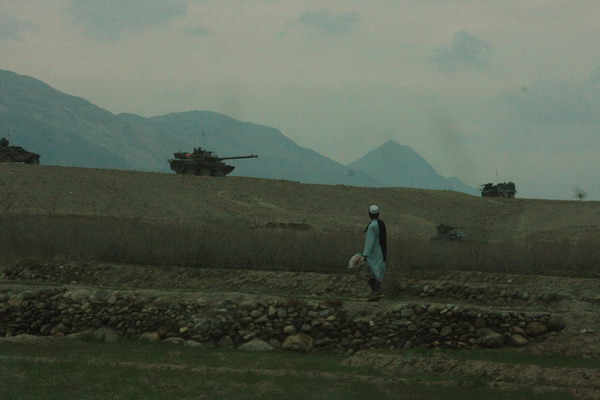
Moving with the French.
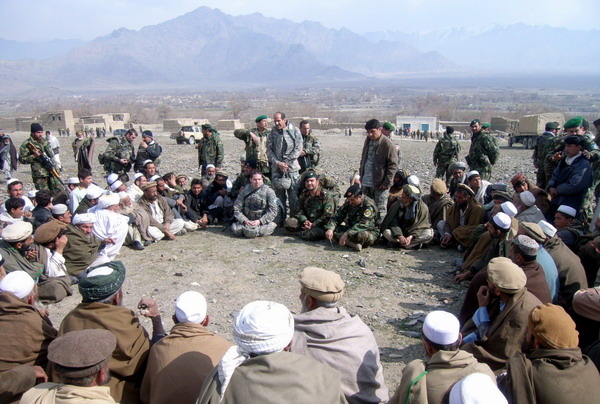
This is the most traditional form of government in Afghanistan … the shura. Here we have local leaders gathered from around the area. The Afghan government set up and ran the meeting. We just joined to pitch a few ideas and tell the people how our projects will affect them and the manner in which their government enabled them to happen. The more Afghan people understand how their government works for them and trusts the government is around for the long term effort, the more stable the area will be.
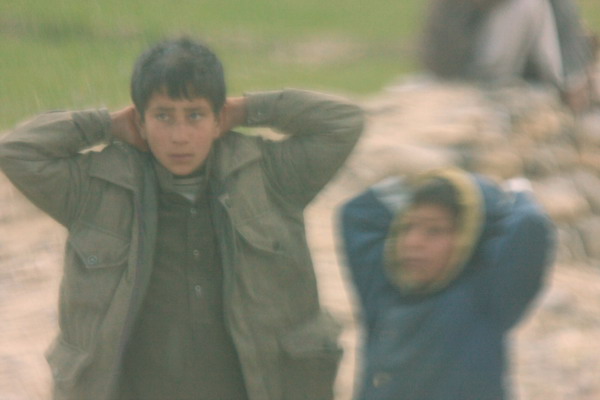
No, these kids weren’t being arrested…
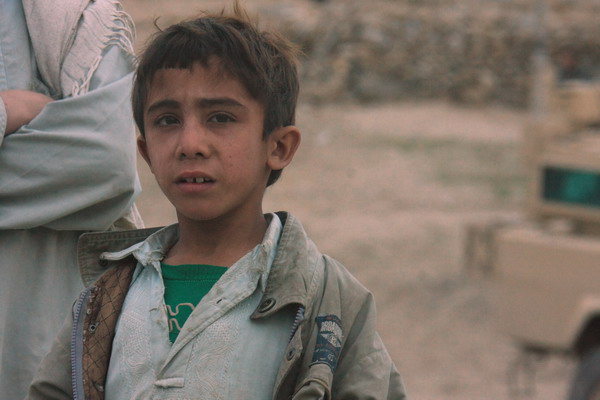
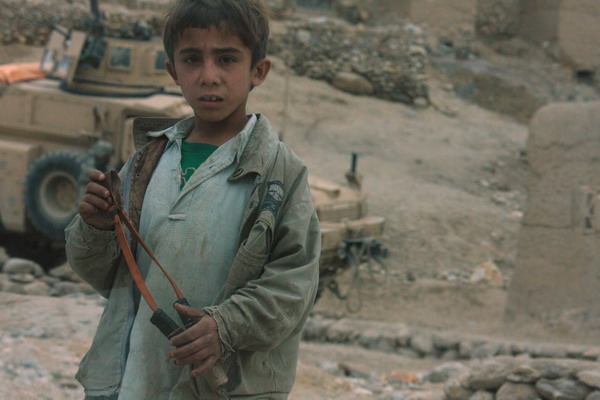
Many kids have slingshots for fun and to hunt.
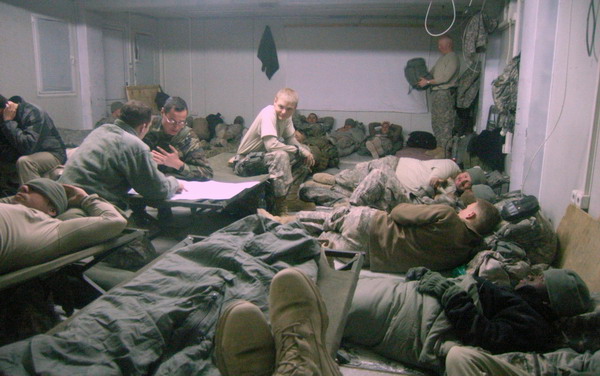
These were our luxury accommodations for a few days. I’m using the cot in the middle to plan our mission with the French.
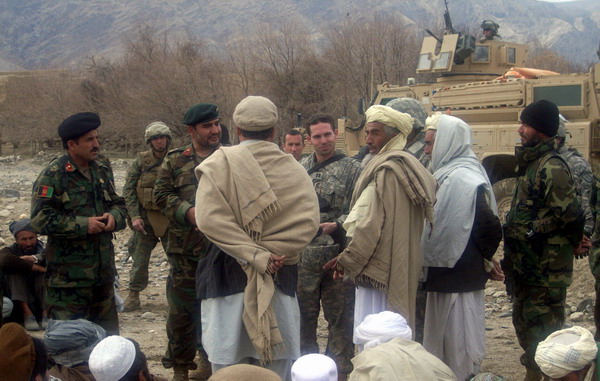
Another meeting with the village elders along with the ANA who provide security in the region.
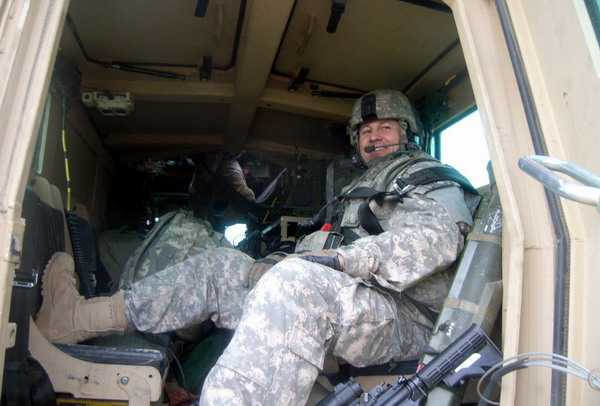
Jon just chillin’.
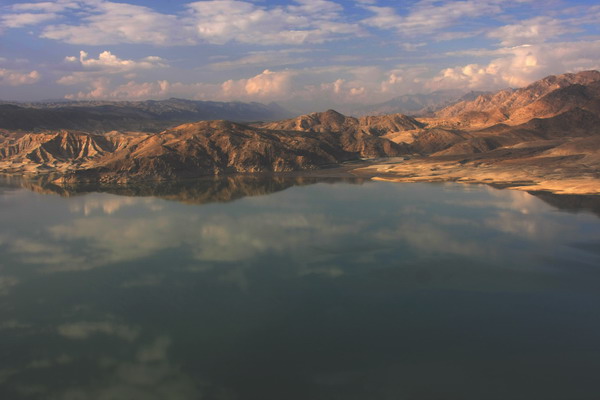
Naghlu is even prettier in the late afternoon when it’s flat as glass.
Terry, Matt and Rakes.
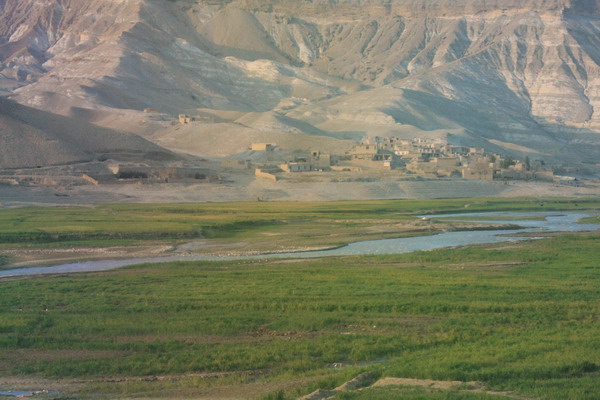
Winter wheat is a very important cash crop in this area. It seemed to be in every valley floor.
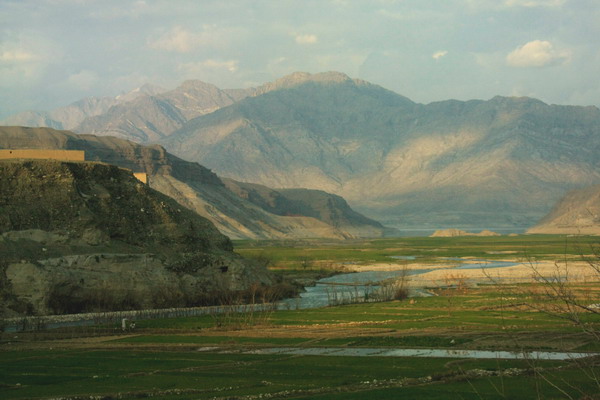
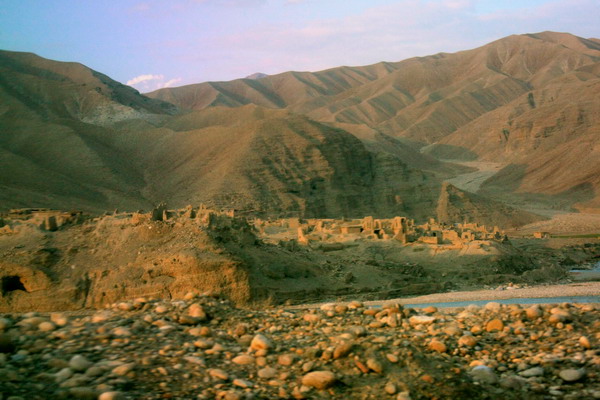
Here you can see the ruins of a village. I’m not sure if it was destroyed in one of the wars, or it was merely abandoned. Either way, this is what it looks like today.
It was another amazing month in a country full of surprises. There is still much strife, but the overall direction is one toward peace and the potential for prosperity. We try to help in a few small ways to make that ideal come to fruition.
Until the next post…
–Jim
Afghanistan — Month Three (Part 1)
Hi everyone, it’s about time for another monthly post. This will be another two part post, and I will follow it very shortly with images from South Africa. Anna and I will be there for a vacation. One of the benefits of being on such a long deployment is that we get to take a short break in the middle. But, enough of that, on with the Afghan pictures.
I have been continuing my effort to learn the language and immerse myself into Afghan culture. I really do enjoy it and the more I know, the better I can perform my job.
This photogenic gentleman was in Kapisa province.

I really like this image. These boys are in a Kabul bakery. If you look close, you can see a lot through the window, and on the window.
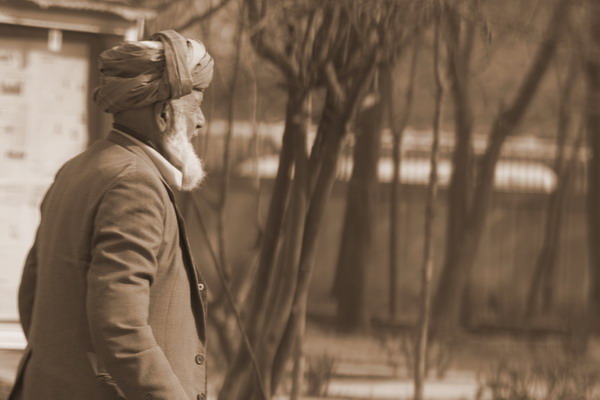
This man was in downtown Kabul, watching the traffic pass by.
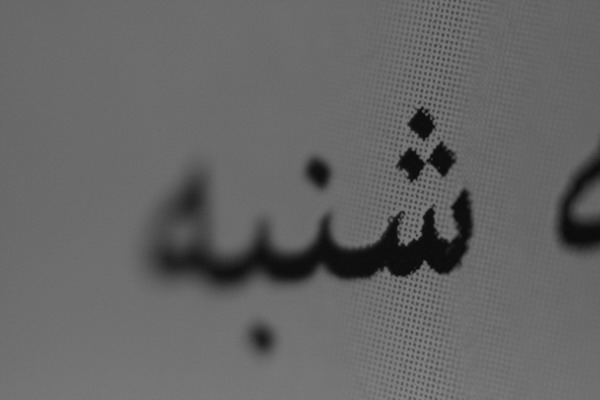
I also had fun with a macro lens. This is the Dari word for day, shanbe.
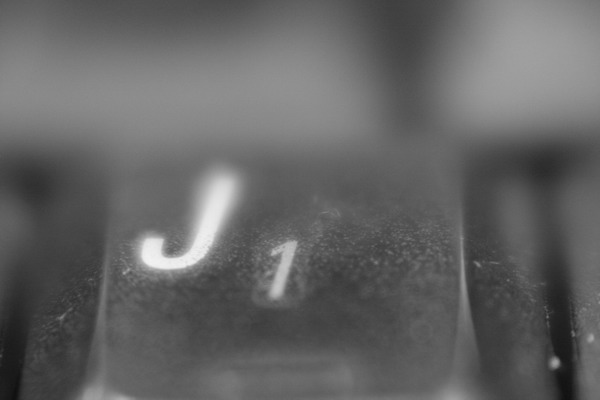
Macros are fun because even something as mundane as my keyboard makes for decent fodder.
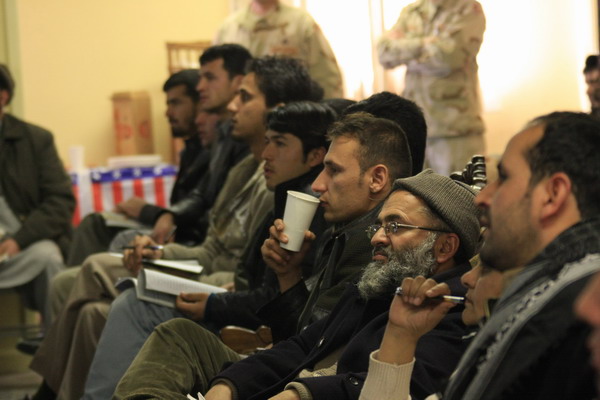
In order to build the capacity of construction companies in the region, we tailored a training class for them. The result was very positive. Not only are these companies very hungry for work (and the resulting paycheck), but also for knowledge. We immediately saw improvement in the proposals submitted for projects, which is an encouraging sign.
These next few images are people who were at the training.
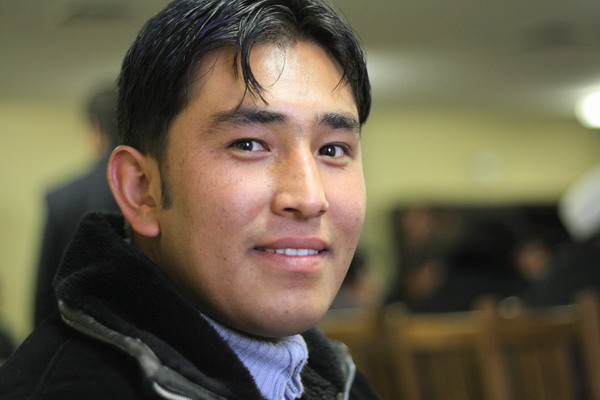
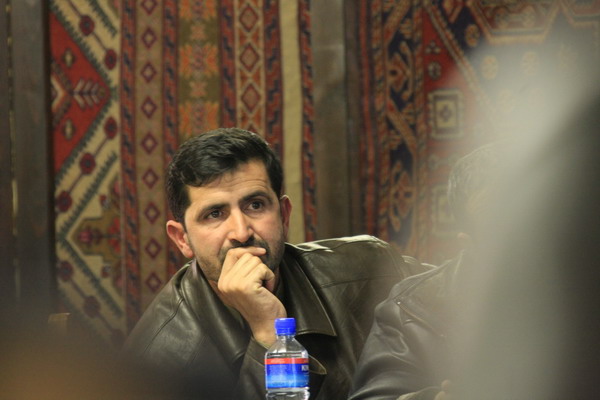
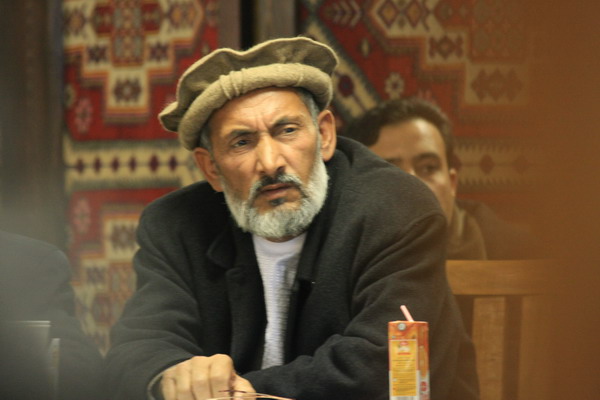
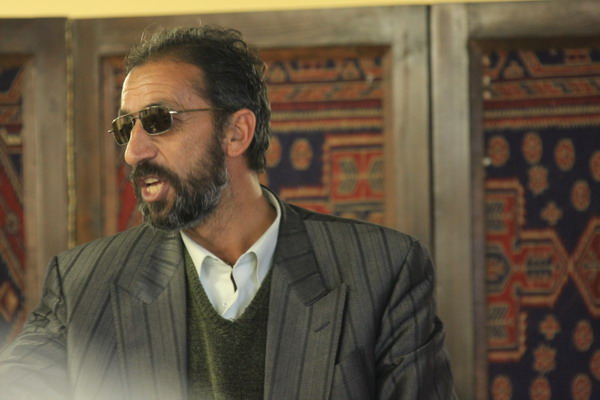
Although he’s a contractor, this man should run for politics. He gave a fiery speech to lament the vast requirements levied upon contractors (i.e. they have to do lots of coordination with a government they don’t often trust). At the conclusion, he got a rowdy applause.
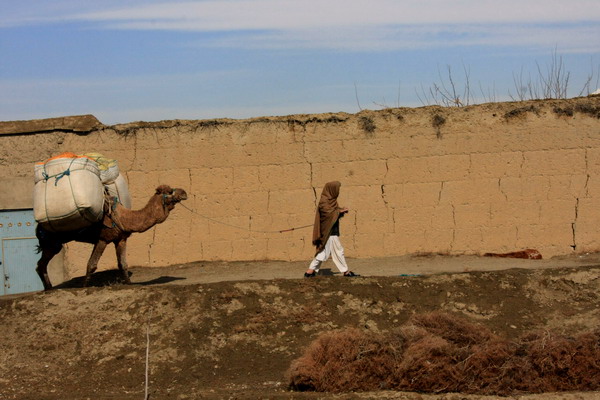
This camel was toting goods through one of the main markets in Kapisa.
More market images…
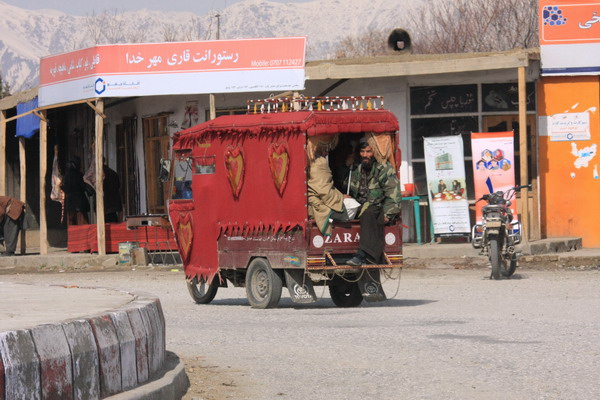
These little tuk-tuk type vehicles are all over the place. They appear to be quite useful.
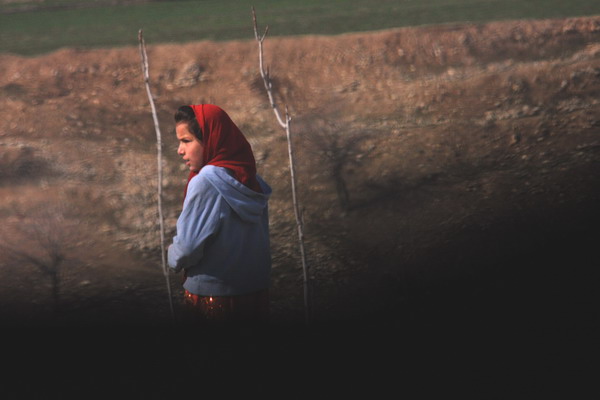
Little red riding hood.
The next few images are more interesting Afghan people.
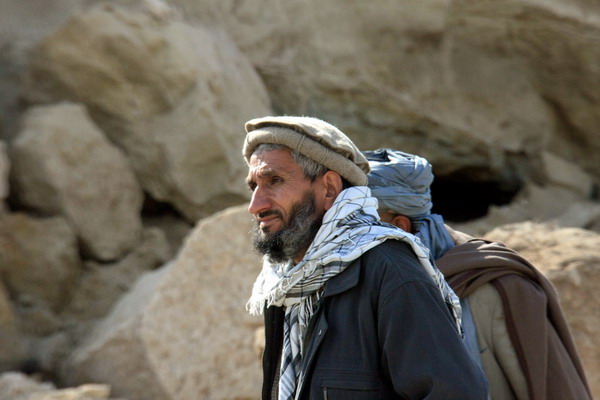
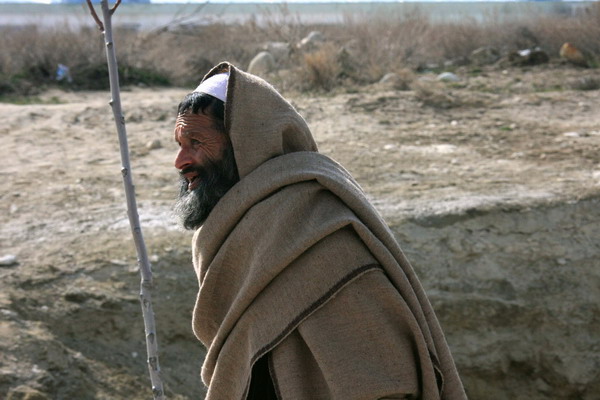
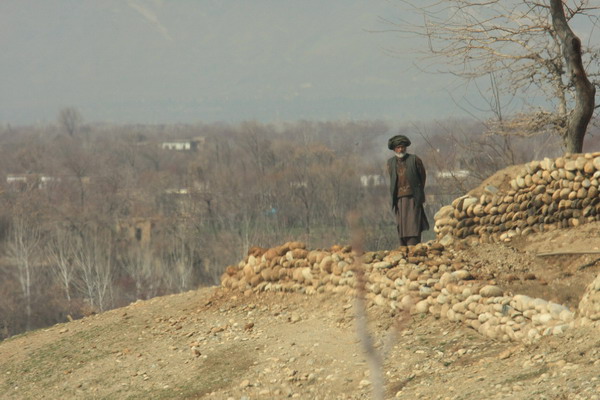
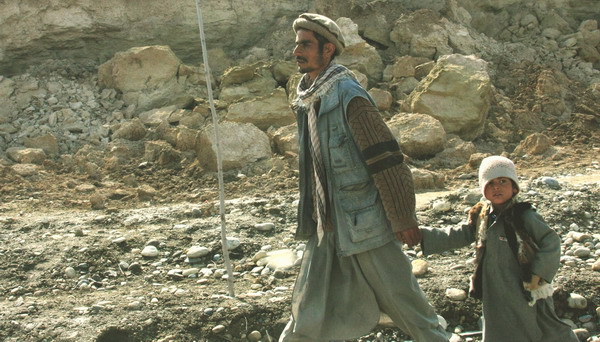
Just along for the ride.
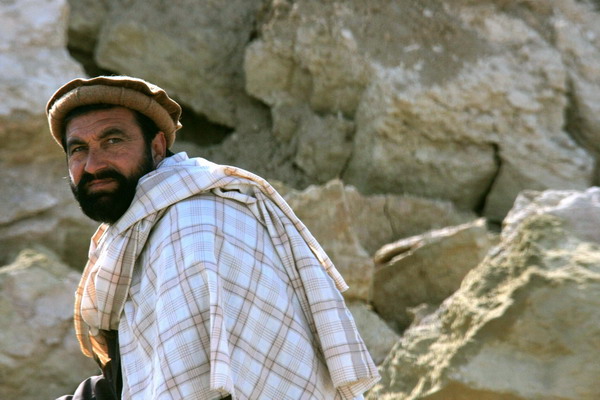
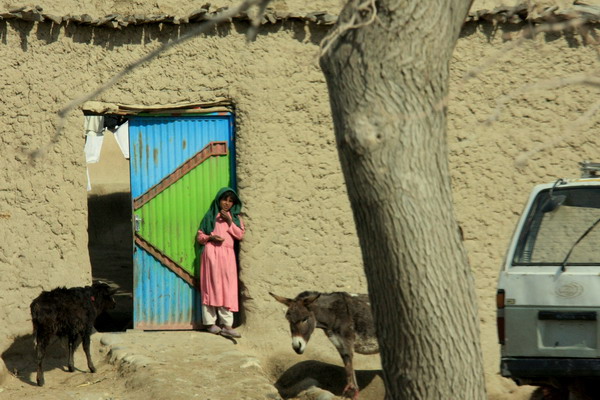
I love the multi-color doors that every compound has.
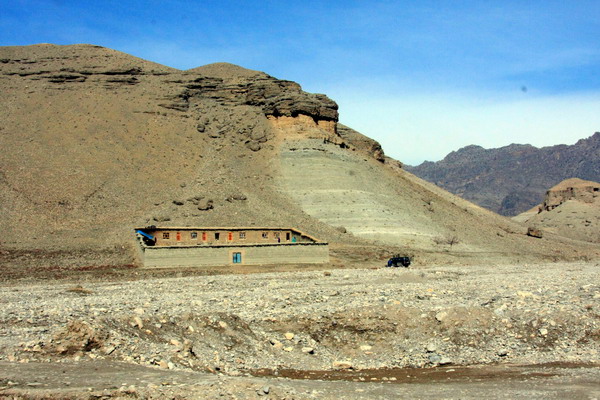
And the contrast that color has with the landscape.
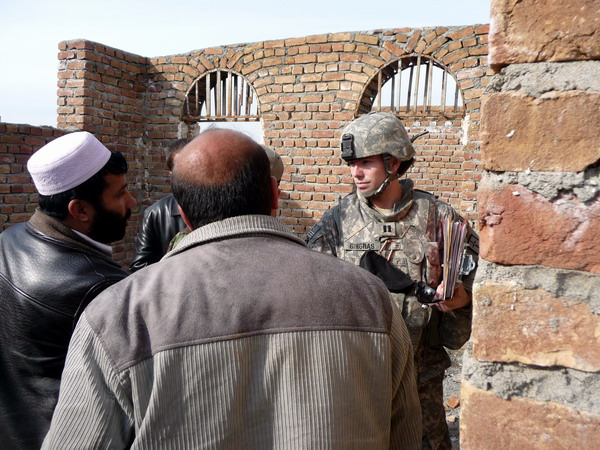
Of course, one of my main jobs is to go out and inspect projects. If you look close at this one, you can see there were a lot of problems with the brickwork. Fortunately, again, the contractor was very receptive to our direction and made all the changes we required.
It’s very important to follow the contract directly, which is what I am confirming here. As such, it’s important to write a good contract, so we can ensure a quality product.
Lumber is fairly scarce, so these men are making their own, on site.
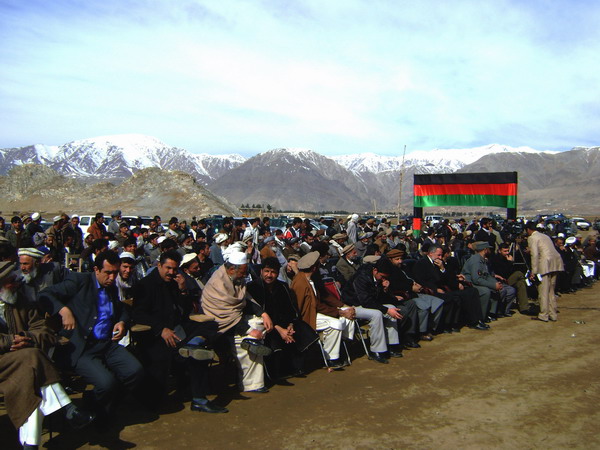
This is a ribbon cutting/ground breaking ceremony for one of our projects.
You don’t see any western faces here, which is a very good thing. Although we help these projects come to fruition, ultimately, they are Afghan projects. So, we make sure to involve the appropriate government officials in every stage, at the same time wiping out any chance for corruption. This builds their capacity to effectively run their country, and ideally builds the people’s trust to know that their elected and appointed government is a capable and enduring institution. It is only Afghans who can bring long term stability so many people desire.
–Jim
Afghanistan — Month Two (Part 2)
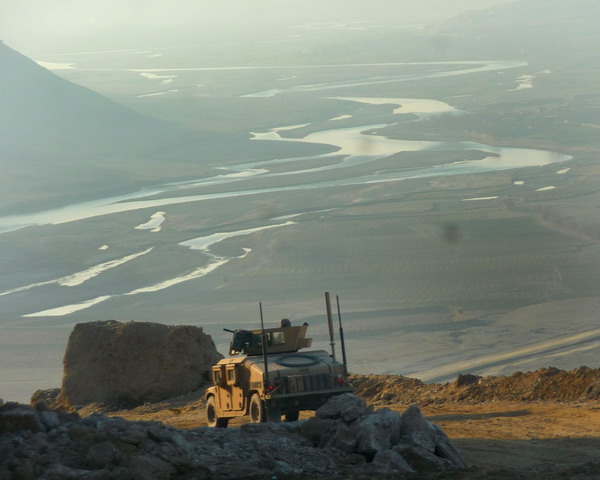
This vista is the Panjshir River in Kapisa.
Our vehicles traveling on a road we’re building.
Here is that same contractor again. He’s Pashtun and VERY jovial.
We stopped for a very quick meeting to say hello, but he insisted we have a bite to eat. He pays his 1000+ employees about $4/day (a very reasonable Afghan wage), but the big benefits are two meals a day and transportation to the mosque for prayers. Have I mentioned that Afghan food is tasty? Well, this image shows one of my favorite meals: dry bread with rice, dipped in a meat sauce.
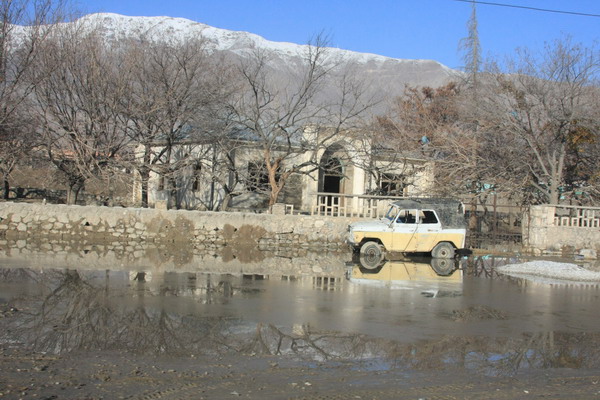
Here is another view of Parwan Province.
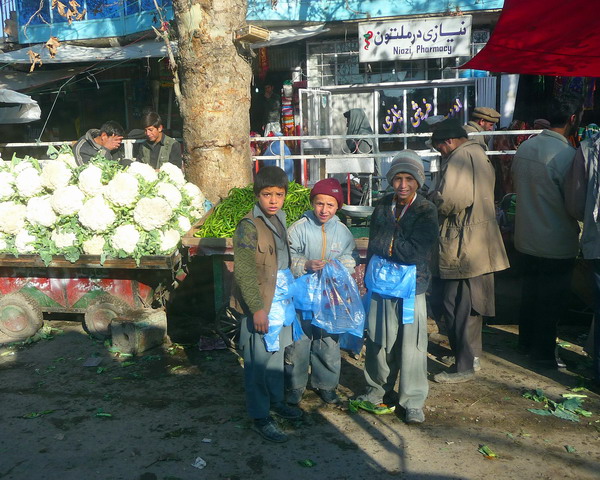
These boys are in a market in the city of Charikar.
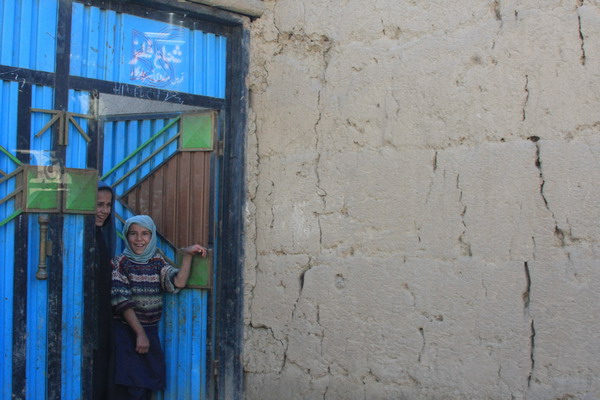
The contrast is stark here.
The next set of pictures is from our Christmas Eve party (and we repeated the event on New Year’s Eve). Jon (our Doc) wanted to share his family’s tradition with our team. So, we all enjoyed a cigar together on a cool Christmas Eve.
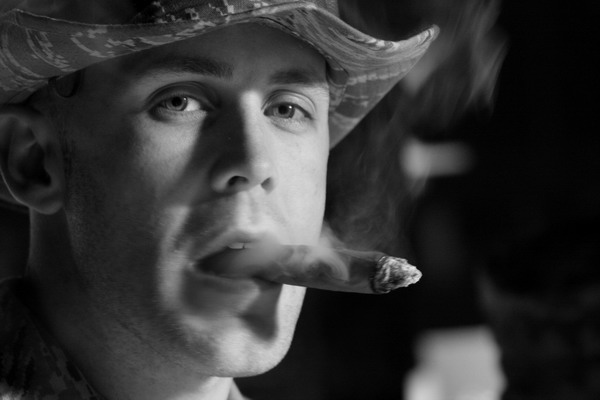
This is Patrick.
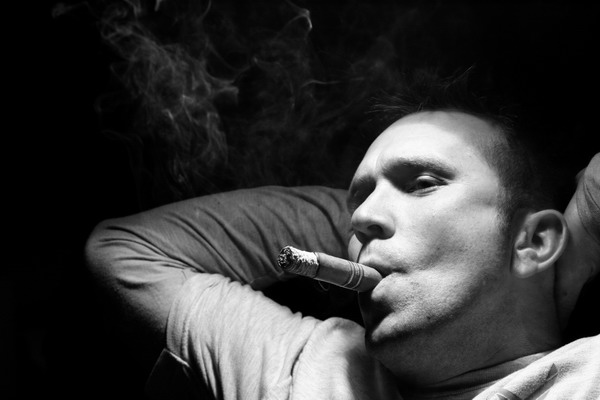
The George.
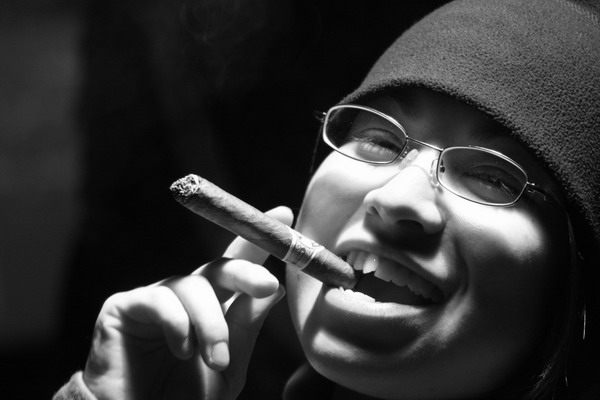
Cindy.
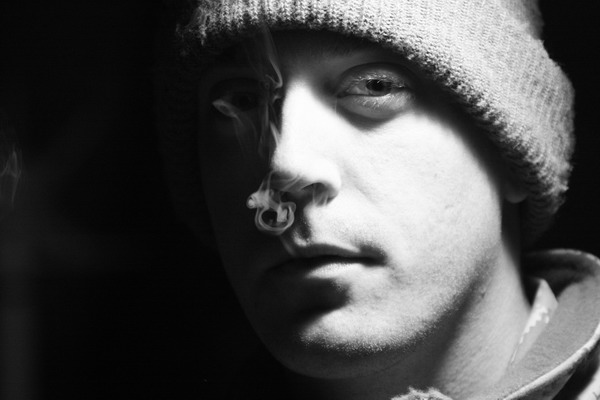
Daniel, who is gifted with languages and computers.
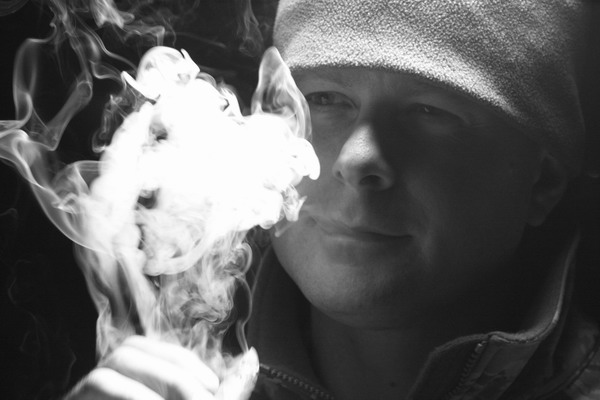
Todd, one of the other civil engineers, who does a great job, no matter what he’s doing.
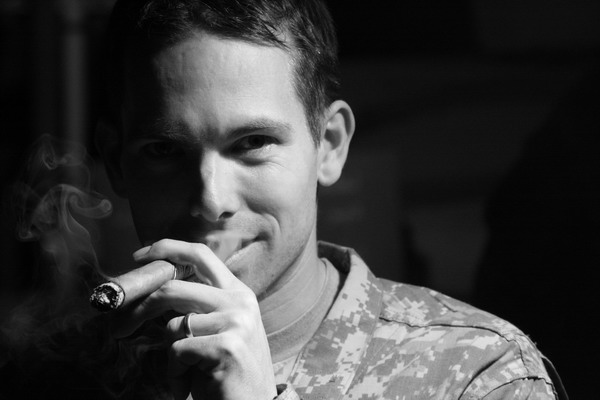
Yes, I enjoyed a cigar too (sorry, Mom).
We have many meetings with the Afghans.
The Afghans also have many meetings with us. This particular one is to gain support from the leaders of the area around a proposed project. The idea is that we present project proposals that are technically viable and sufficiently planned to a board of Afghans. They then have a voice in the process to recommend a contractor. With that process, we gain buy-in and they can help ensure a quality project is produced. Although we (the US govt) retain final authority to choose a contractor, the Afghans help us choose the best contractor for every project.
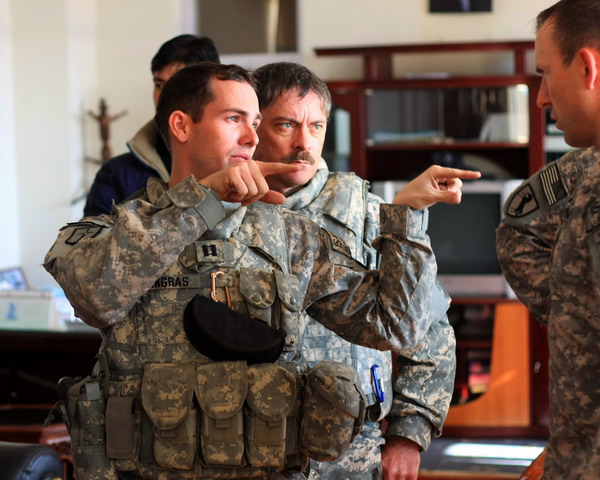
I know I look a little funny in this picture, but I was emphatically indicating where we needed to go.
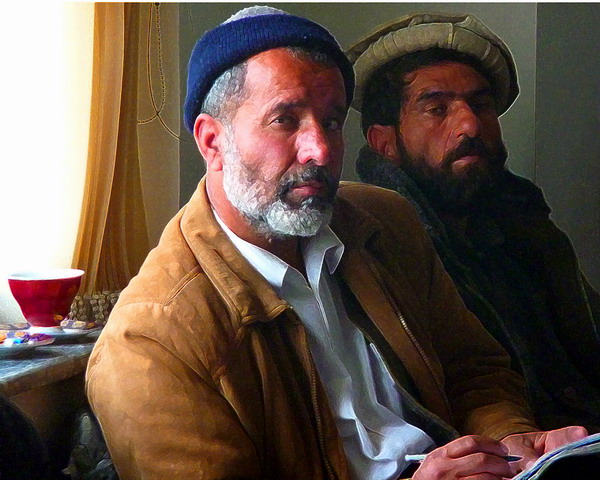
These gentlemen were in a meeting with us. I love the lighting in this image and the Chief added a great filter. Now, I think this image could be from an Afghan Van Gogh.
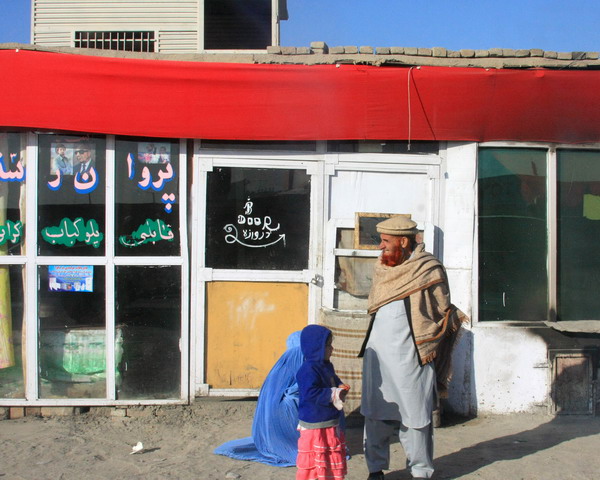
I’m not sure if this color is natural or not, but it’s certainly colorful.
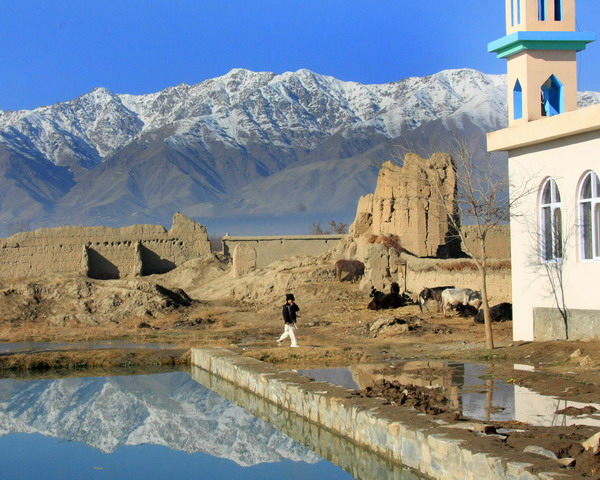
More interesting contrasts: the new and old, the water and desert and reflection and reality.
Those images depict our second month here. My time here remains a very rewarding and exciting experience.
I look forward to the summer when construction can resume in earnest.
Until the next post…
–Jim
Afghanistan — Month Two (Part 1)
OK, now that we’ve been in Afghanistan for about 2 months, I thought it was about time to sort through all the pictures we’ve taken and show you a few. As was the case with the last post, most are my pictures, but not all. In the age of digital media, every time we doing anything, we photo-document the event.
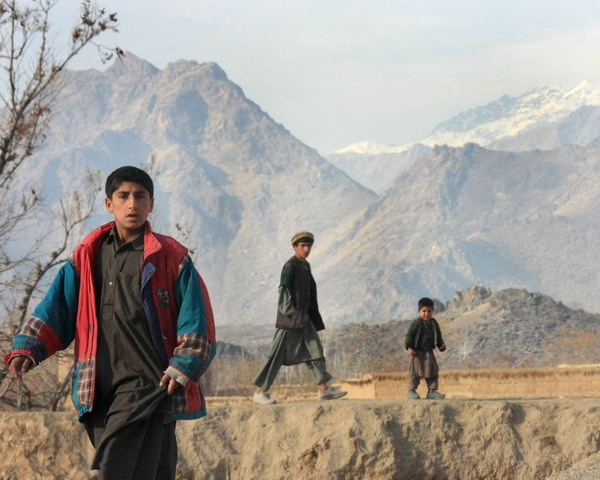
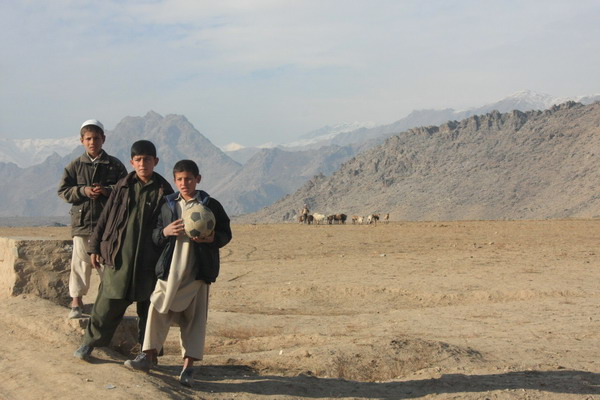
These boys are from a small village in northern Kapisa.
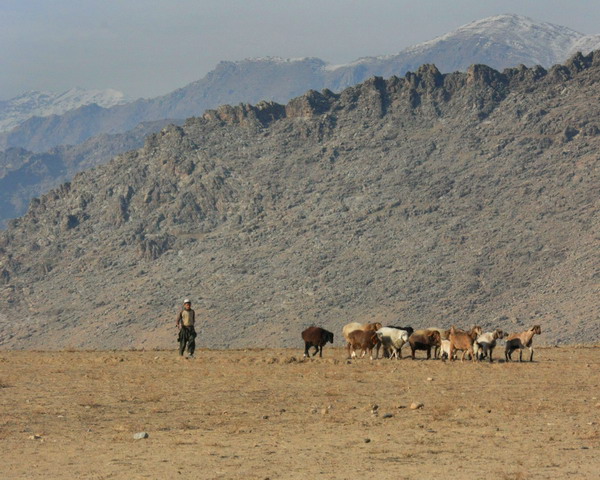
These goats and their herder are from the same area.
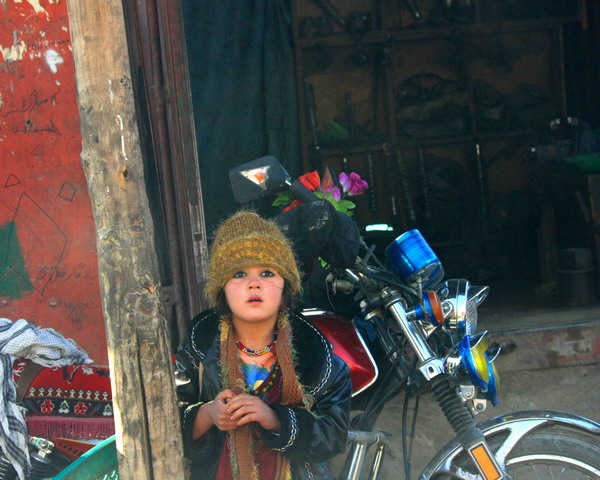
I love this girl’s expression. When we move through towns and villages, we tend to attract attention. So, we also get a range of expressions: From awe and wonder, to apprehension, to fear, to joy, to resentment. It really covers the whole spectrum.
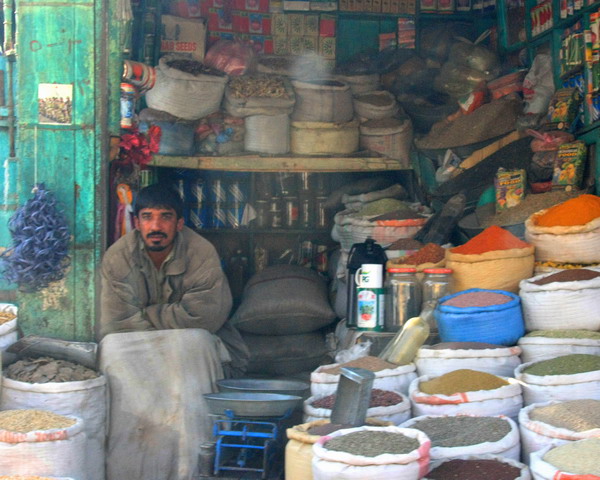
Spice is a very important part of Afghan cooking. I’ve had the pleasure of tasting some very delightful meals. In fact, I would say that the food here is some of my favorite. Although I stay away from dairy products now, pretty much everything else is delicious. I highly recommend going to your local Afghan restaurant to try for yourself.
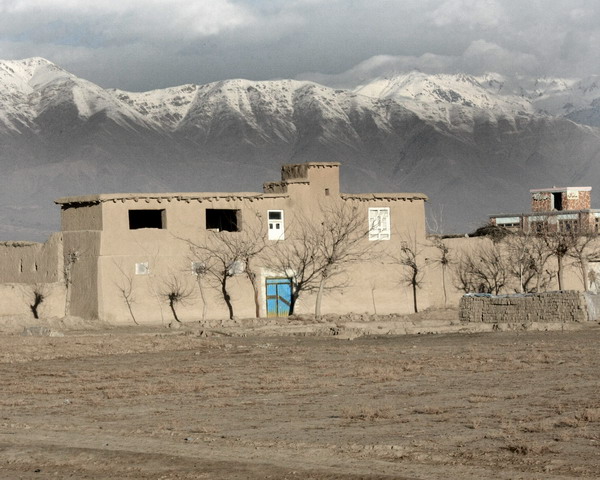
This khana (house) is very typical Afghan construction. It’s from a trip we took in Parwan Province.
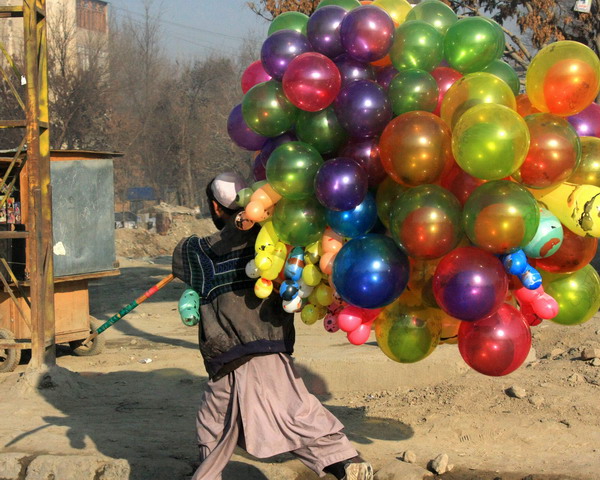
When we went down to the embassy in Kabul, this colorful balloon seller was walking down the road.
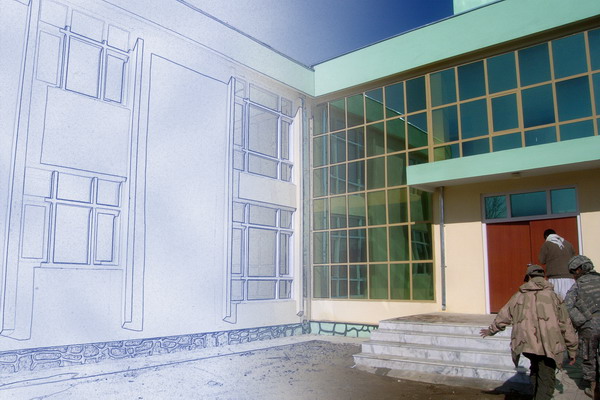
Although you can tell this image has been through Photoshop, it’s a good representation of taking a building from conception to design and finally to completion. It is also from Parwan Province.
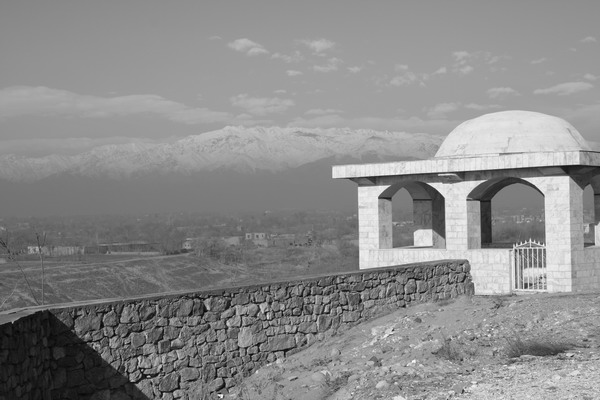
A great view over Kapisa Province.
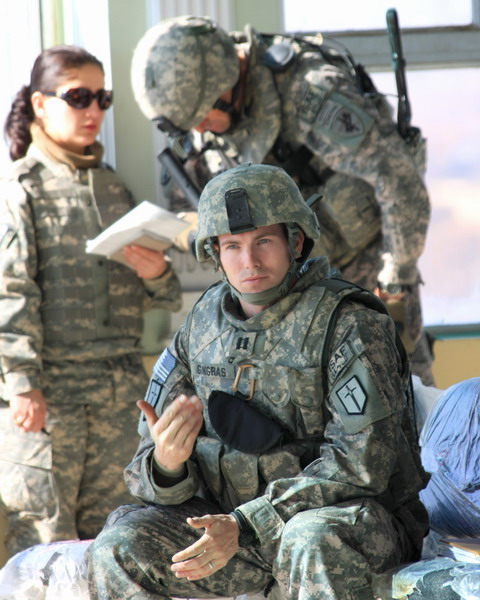
This is during a collection of contractor proposals. I think I was getting a little anxious and was ready to go…
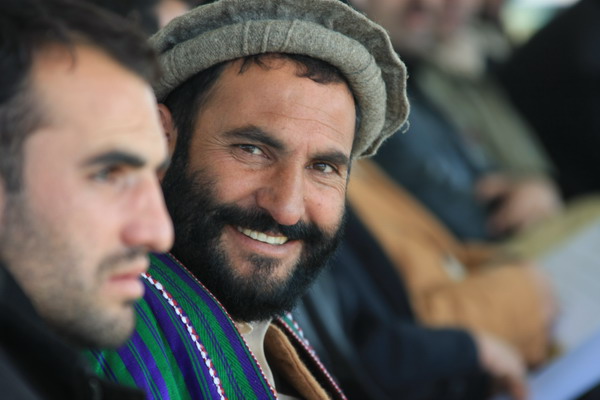
This is one of our contractors. You’ll see him again in the next post.
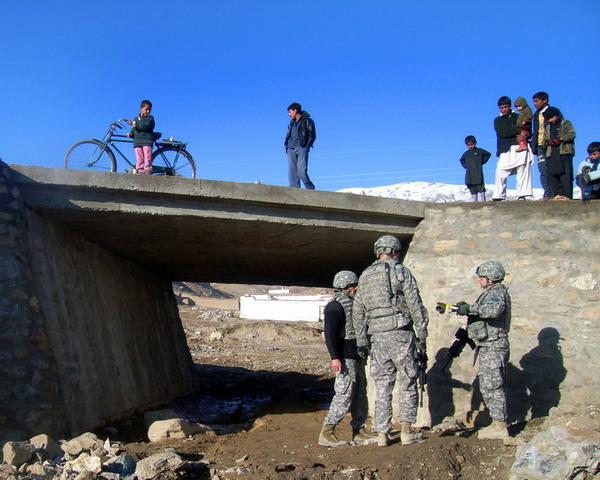
Here we are out inspecting a small bridge we built in Parwan.
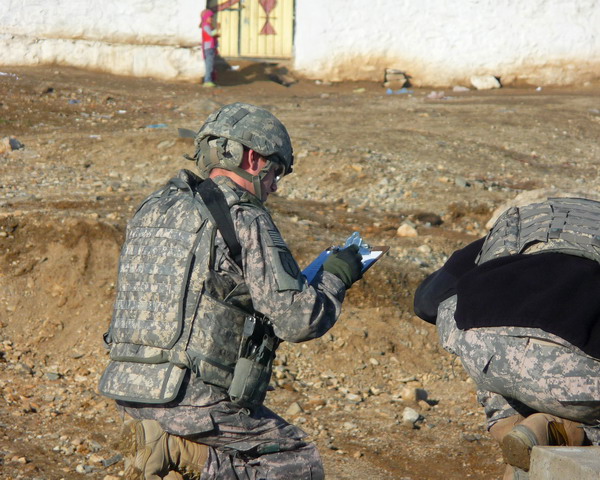
Taking notes to inspect the quality.
I even had a little help taking the measurements.
Here are some of the workers. The stone masons here can do incredible work.
The Afghan government (with our help) puts on women’s capacity building training on a regular basis. Often, it’s in the form of successful Afghan women (elected leaders, judges, doctors, ect) who come and speak to other Afghan women to educate them on ways to improve their station in life. The idea is that if women know more about their rights and have a greater voice in society, then the more moderating influence they have. Although there are parts of our area that too conservative (read: women’s rights repressed), most areas are very receptive to this type of training.
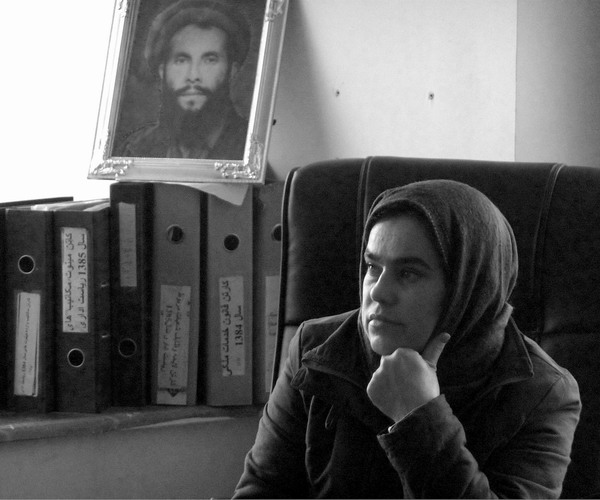
The Afghan constitution also stipulates that there will be a certain number of women representatives (30%). She is an example of that and is a member of the provincial council, which is part of the elected leadership of the province.
Many were lined up, waiting to come in.
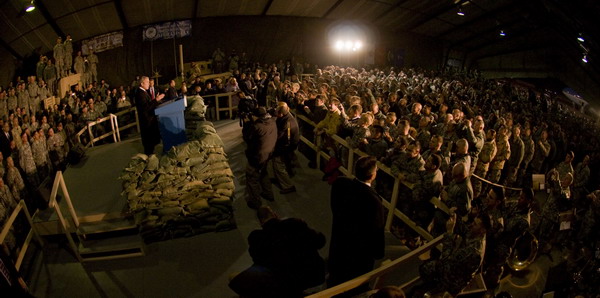
This image is from the recent visit by President Bush. Although I didn’t get a chance to meet him, it was a nice gesture that he stopped to say hello. Fortunately, no one here threw their shoes at him.
So, that concludes this post. I will have another one shortly.
Until then….
–Jim
Afghanistan — Month One
Well, I have now been in Afghanistan for a month and a half … and this country is as beautiful, amazing and more troubled than I remembered. However, I feel that although we have a long way to go, progress is being made. As you may recall from my post in October, my role here is the lead engineer on a provincial reconstruction team for Kapisa and Parwan provinces. My team is made up of military from the Air Force and Army, as well as civilians from the Departments of State, and Agriculture, and the US Agency for International Development. Our role is clear: help the Afghan people by helping to improve Afghan government, infrastructure and rule of law all to enable economic development and prosperity. At the same time, Afghan and coalition forces provide the requisite security.
I truly believe once people believe that their government is legitimate and enduring, trust their court system, have the ability to earn a licit salary Afghans will end this conflict themselves. I work everyday with Afghans and their enduring hope for the future gives me reason to work as hard as possible to help them realize their dream of a safe, stable, and successful homeland.
This is truly a worthy cause that the international community needs to see through to completion.
You can see from this picture just how ruggedly beautiful this country is.
This picture is a little out of order, but it’s from the flight in on a C-17. You can see varying levels of anticipation in everyone’s face.
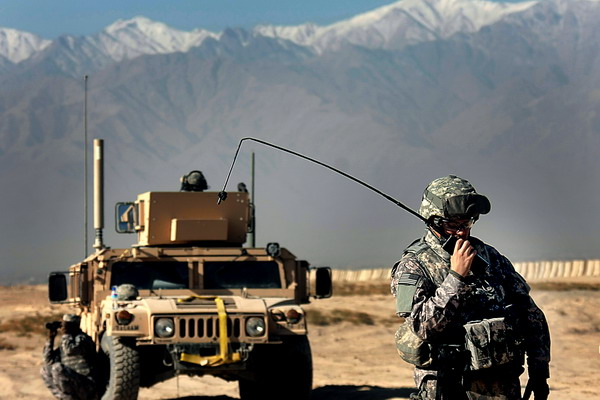
This is Lionel directing the operation. We were out making sure our weapons still worked.
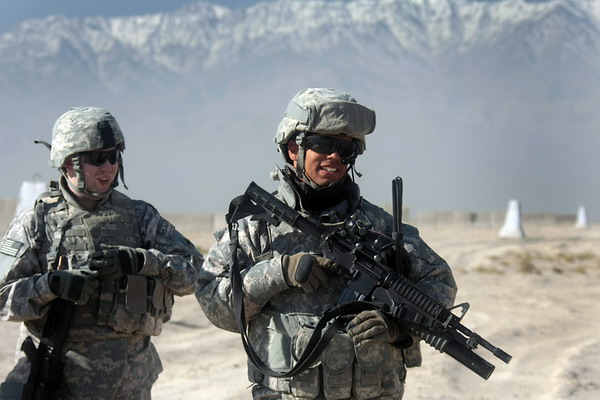
SGT Durden (on the right) always has a smile, great attitude and is a member of the hard working security force for our team.
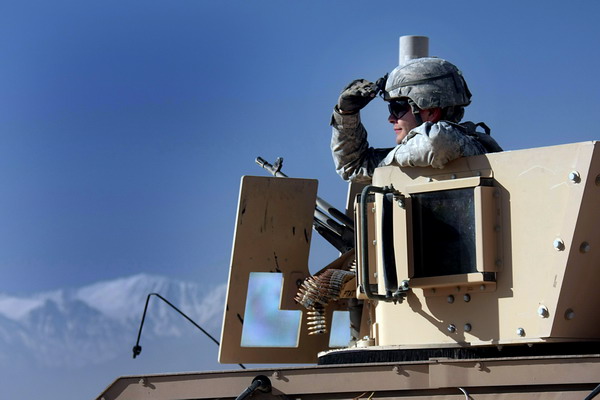
JePe (pronounced Hep Pay) checking our perimeter.
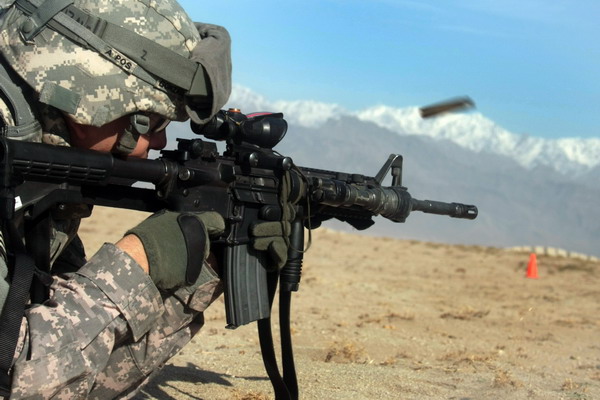
Yep, the weapons still work.
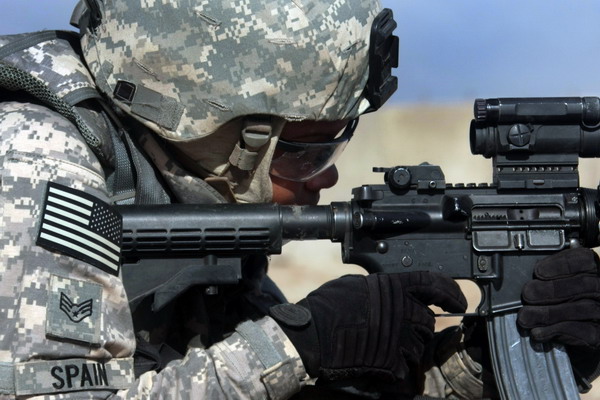
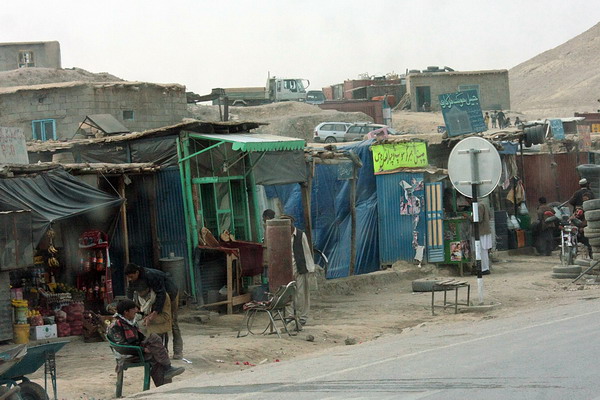
This is probably the most common form of commerce in Afghanistan. A small booth along the road. As you can imagine, the better the road, the better the access to markets. As such, we’re very focused on building and improving roads.
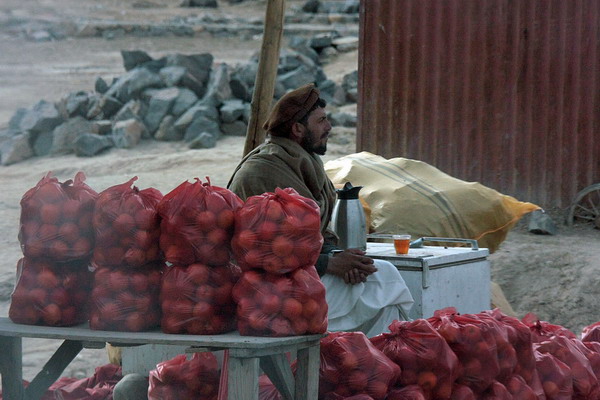
This vendor is selling my favorite Afghan produce, pomegranates. These tasty treats were first cultivated in this area and are grown extensively in the area. One of our projects was to help connect farmers in our area to local markets. Economist Article on Pomegranates This fruit has the potential to be a cash crop and replace poppy production in some parts of the country. We’re also working on two saffron development projects with a similar goal.
Many remnants of the Soviet War still remain.
You can see why passable roads are important.
These guys are the ones who ensure we’re safe as we go around the countryside.
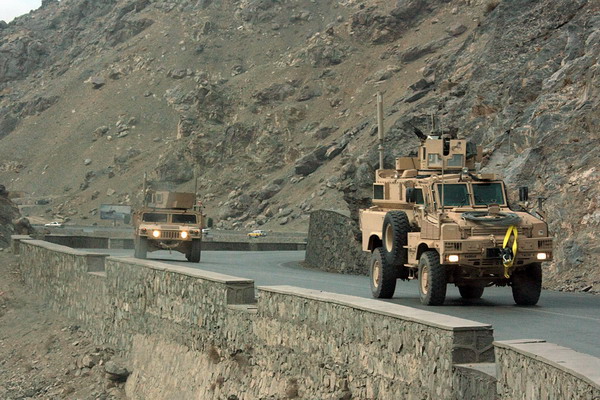
I’m sure you recognize the up-armored HMMWV on the left, but the vehicle on the right is an MRAP and provides even more protection.
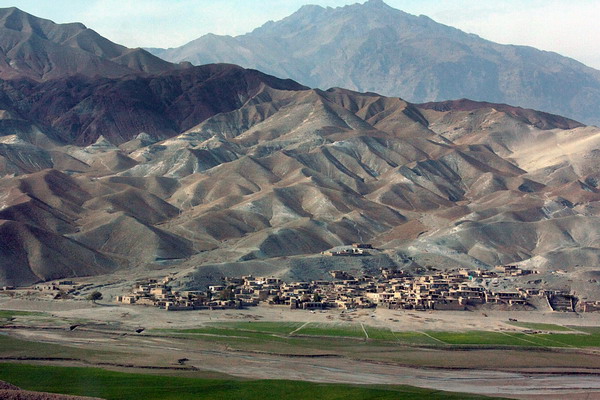
A typical Afghan village.
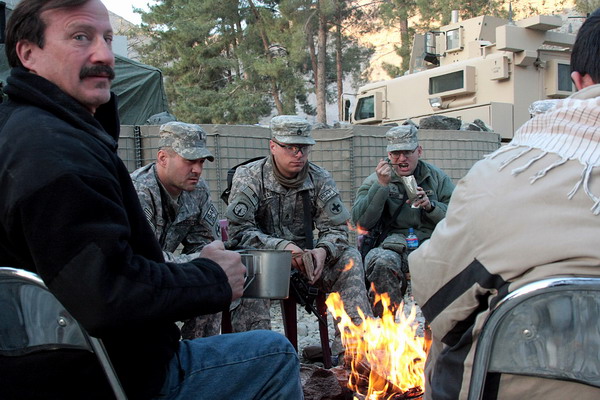
This is an image from one of the austere FOBs we stayed at. Although it was small, the campfire was a nice touch.
The guys had fun sitting around telling stories. The Afghan National Army also has some soldiers here. So, I enjoyed having a traditional meal with their commander. He has some very interesting ideas on how to solve the problems of his country. As you might imagine, he believes that security is the number one problem (I didn’t disagree). However, to fix it, he recommended, “instead of sending another 20,000 American troops, use that same money and train 100,000 more Afghan soldiers. We know our country and with enough people, we can get it done right. I am willing to die for my country. I don’t want you to have to.” Although the solution isn’t viable, it was a very interesting conversation. Keep in mind, this whole exchange was done through an interpreter. Although I am learning Dari (Afghan Persian … the language of many people in Afghanistan), I am not even close to fluent. So, without the help of these unsung heroes, we couldn’t hope to succeed.
This is Naghlu Dam and provides a great deal of power to Kabul. Unfortunately, it doesn’t power any of the surrounding region, a region that is particularly unstable. Someone at the Embassy told me, “this war can’t be won in Kabul, but it can be lost in the provinces.” Perhaps we can renovate this hyrdo-electric power source and use part of the power to electrify the surrounding valleys.
Although the electricity would be great for this area, water is its lifeblood. So, the proper management of that resource is paramount.
It is a very pretty lake. The water and arid area make a stark contrast.
This is one of our projects, building a road where there was none before. Although there is heavy equipment working on the road, we like to see a large local workforce on the project. It means they have a greater sense of ownership and provides a job for a large number of people.
You can see one of the village elders points in the direction of his house.
We always attract a lot of attention. Our security force provides a vigilant overwatch.
A pretty sunset over Naghlu lake.
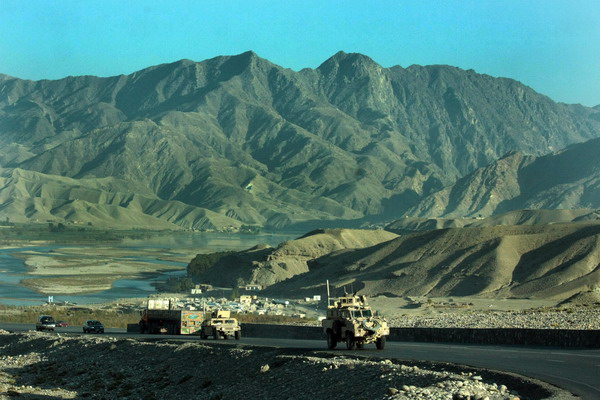
Our convoy.
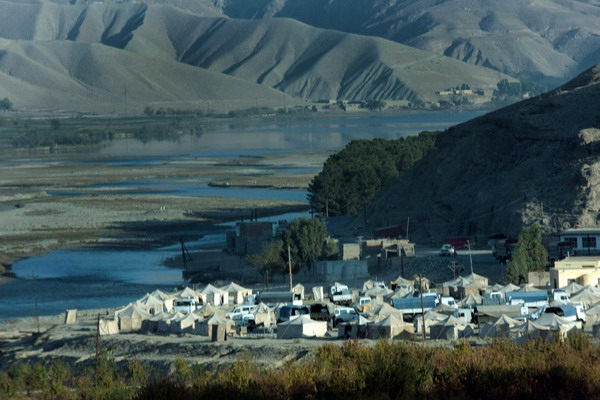
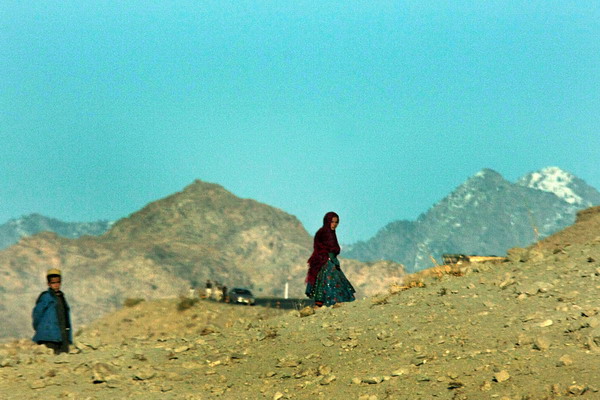
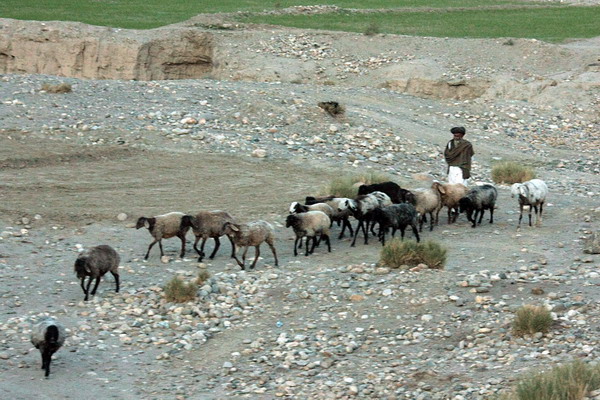
We love this billboard because it says so much, so well.
I love this picture of a young Afghan.
There are many more pictures that I will include in the next post. Also, these images are from several people on the team and the Chief was kind enough to help me clean up the images.
In case you can’t tell, I really enjoy being here. Although I wish I could spend the holidays with Anna and the rest of my friends and family, I feel this is a good place to be. My team and I are doing our best to help the Afghans and that is a good reason to be away from everyone.
So, until the next post…
–Jim
Savannah, GA
Well, after the last post, Anna flew in to spend a little time with me before I headed over to central Asia. So, we chose a destination that was relatively close, had a beach, and was relaxing. Savannah and Tybee Island in Georgia met all three criteria. So, off we went to reacquaint ourselves with each other and enjoy our brief time together.
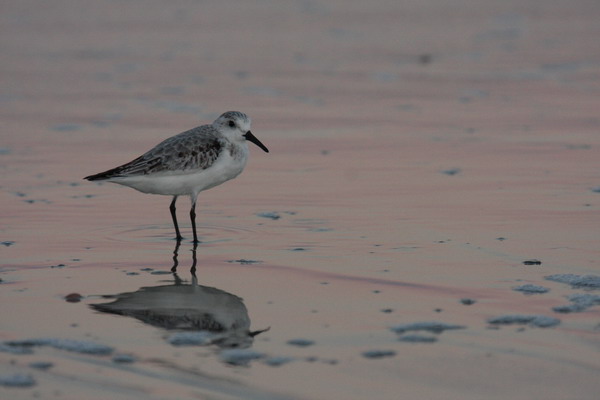
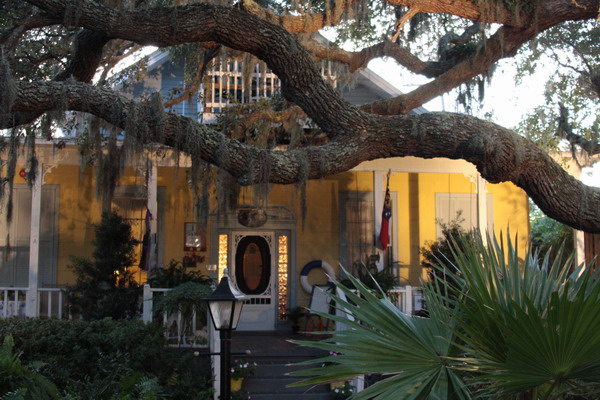
This is the first B&B we stayed at. Both were very romantic and exactly the sort of place we love to stay at.
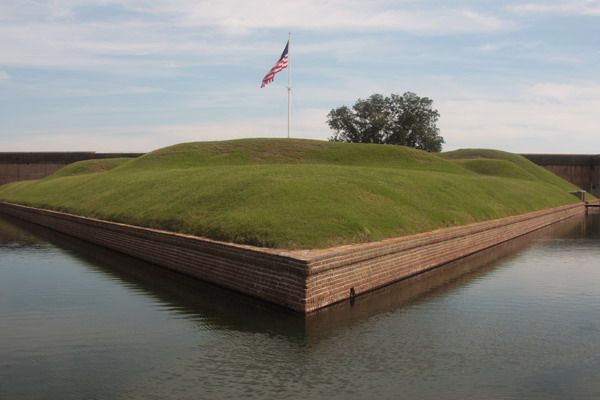
We also visited Fort Pulaski between Savannah and Tybee Island. This very well preserved Civil War Era fort was seminal in the advent of modern warfare. It was the first time rifled canons were used and it had devastating effects on the occupying confederate forces. The battle lasted 30 hours and ended when the shells began to land close to the fort’s magazine. Instead of risking complete destruction with a direct hit, the confederate forces surrendered. It’s also interesting to note that the fort was designed by a young Robert E. Lee. He came back to evaluate the fortification right before the battle and determined it was sufficient to withstand attack. Unfortunately, he hadn’t accounted for the long-range, accurate rifled canon fire.
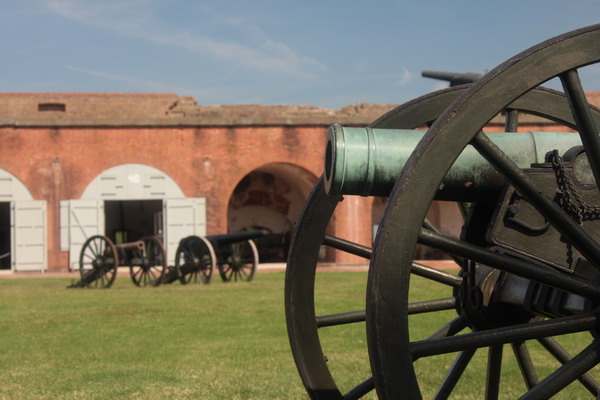
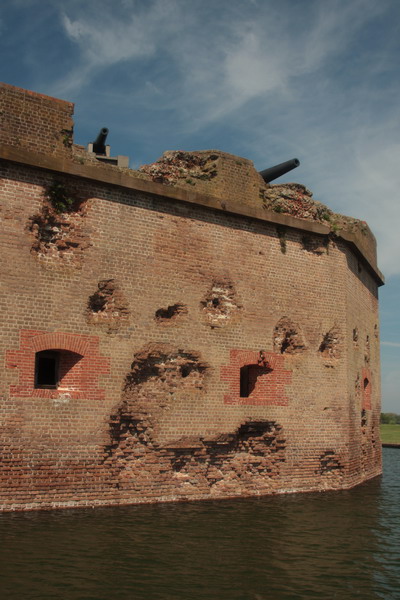
The exterior walls are still pock-marked with the damage from 1862. Portions where the wall was breached entirely was rebuilt, but the rest was left.
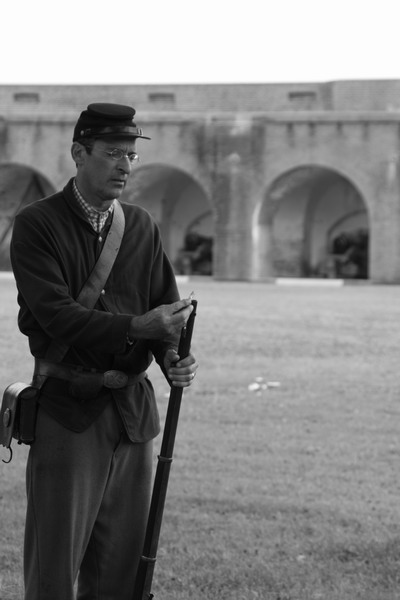
The interpretive portion was also fascinating to watch and included a period black-powder weapon firing.
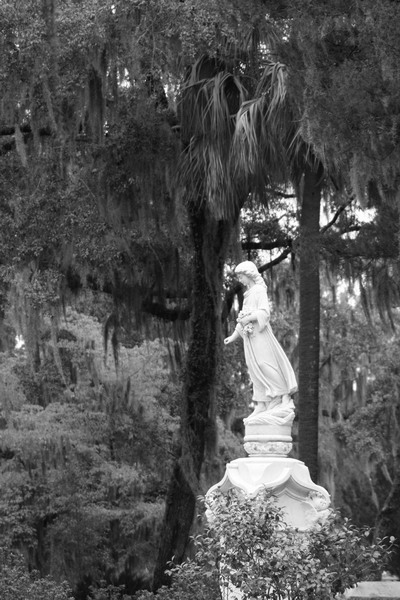
If you have read the book, “Midnight in the Garden of Good and Evil,” you may recall the famous Bonaventure Cemetery. Although I still prefer the immaculate landscaping and elegant symmetry of military cemeteries, this was a close second. It was very picturesque.
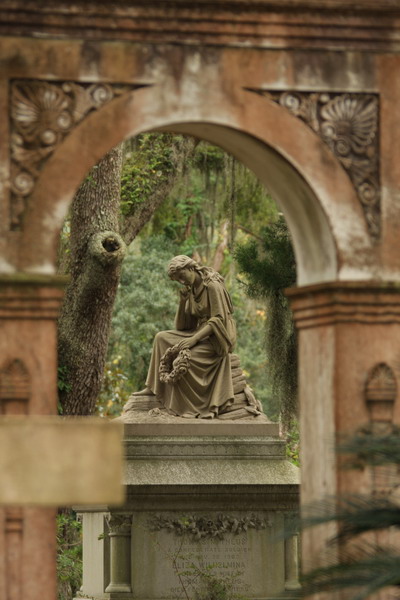
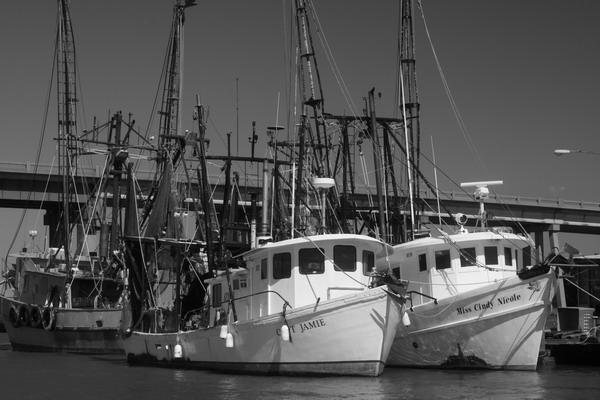
Our next activity was a boat ride out around Tybee Island, with the intent of finding bottle-nose dolphins. Unfortunately, we didn’t see any aquatic mammals, there were plenty of other interesting sights. These shrimping boats were taking the day off, probably because the weather was not very cooperative.
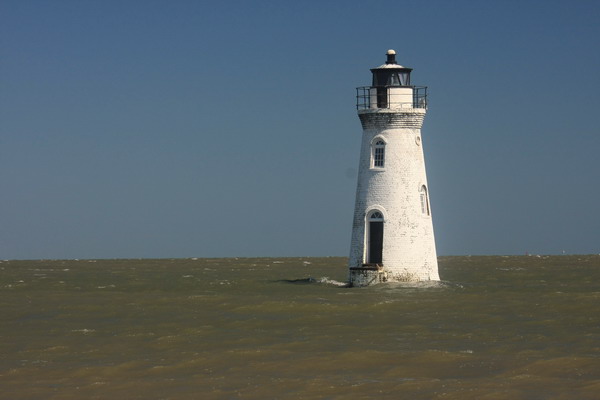
Although it appears that Cockspur lighthouse is built in the middle of the ocean, it is merely a 8′ tide that covers the approach. Construction of this beacon began in 1837, remodeled in 1848 by the same architect who built the Mercer House in Savannah, destroyed by a hurricane in 1854, temporarily extinguished during the civil war, survived the fusillade during the siege on Fort Pulaski, damaged twice more by hurricanes in the 19th century and finally extinguished in 1909. Interestingly, it was man, not nature that turned out the light. The channel that this lighthouse marked was too shallow for the new, larger ships. Eventually in 1954, it was transferred to the National Park Service, under who’s care it remains today.
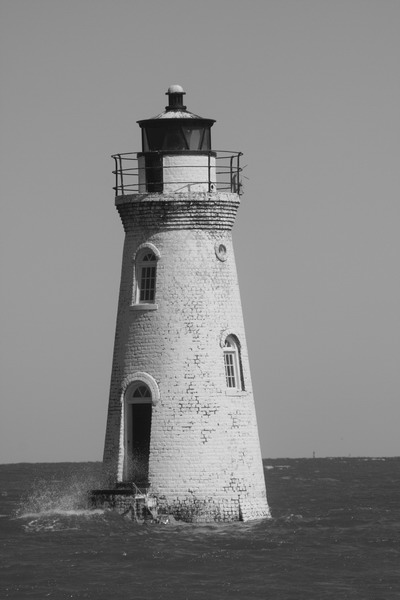
Another view of Cockspur Lighthouse.
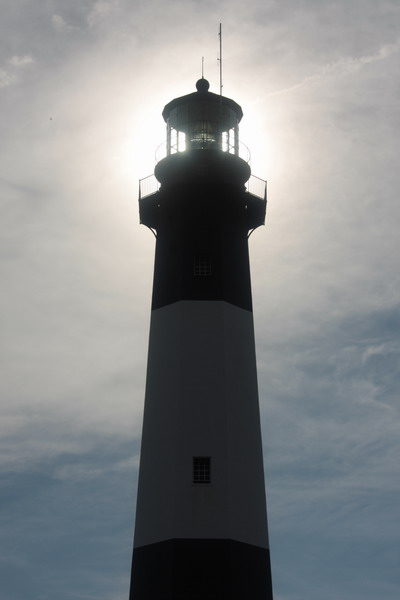
This, and the next three images are the much larger and older lighthouse on Tybee Island. It was first built in 1732 and has been rebuilt four times in its history. The current structure was erected in 1916. Anna and I climbed to the top and the view of the island was quite nice.
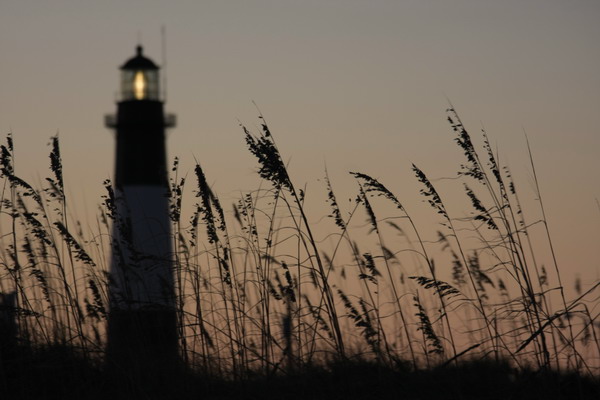
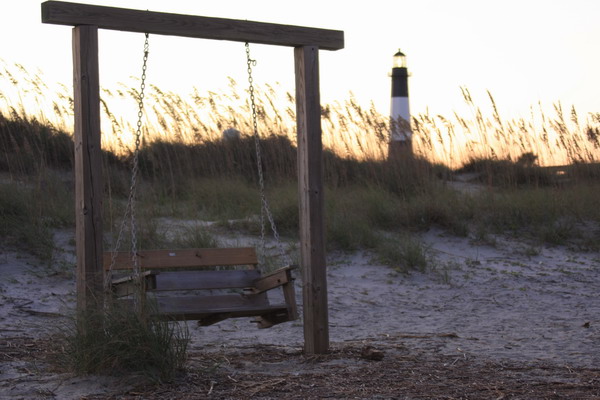
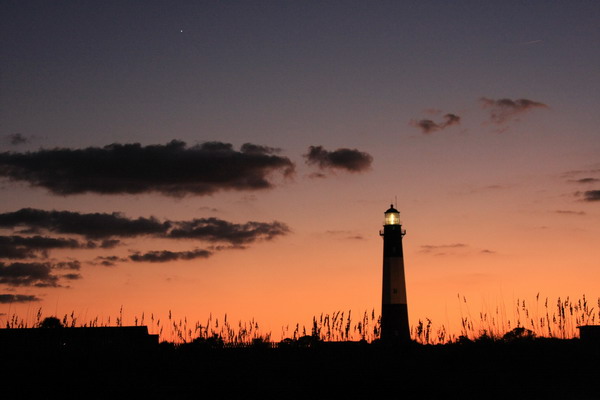
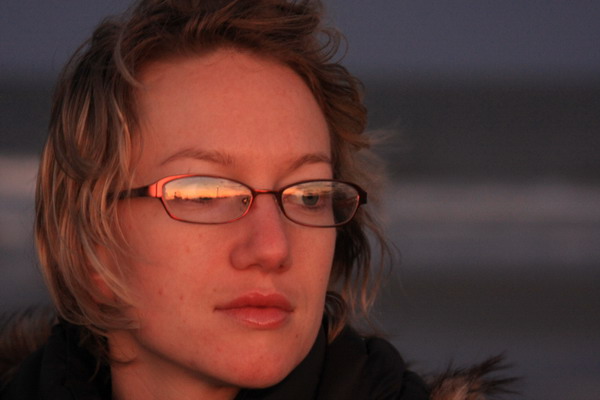
If you look close, you can still see the lighthouse in Anna’s glasses.
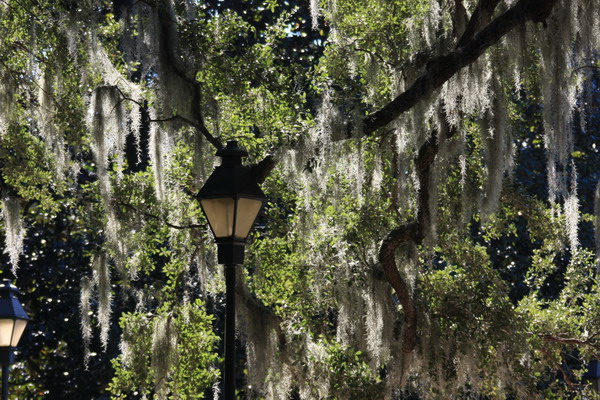
The Spanish moss is very pretty and covers many of the trees in region.
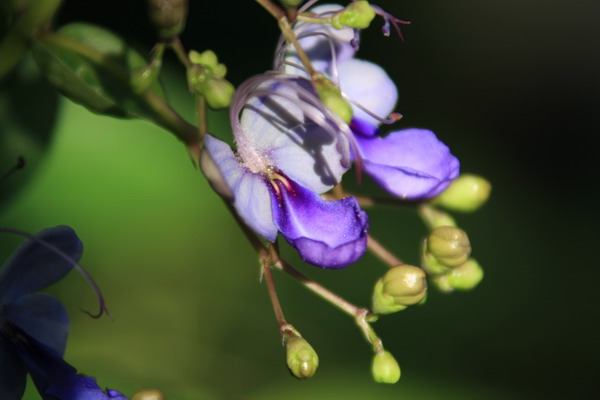
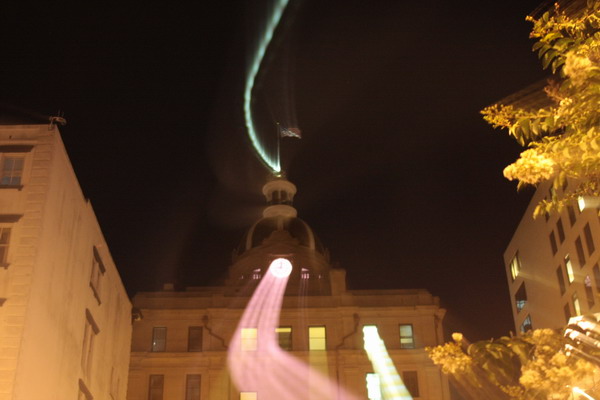
This is Savannah’s city hall. Although you can’t tell in this image, it has a very ornate gilded dome.
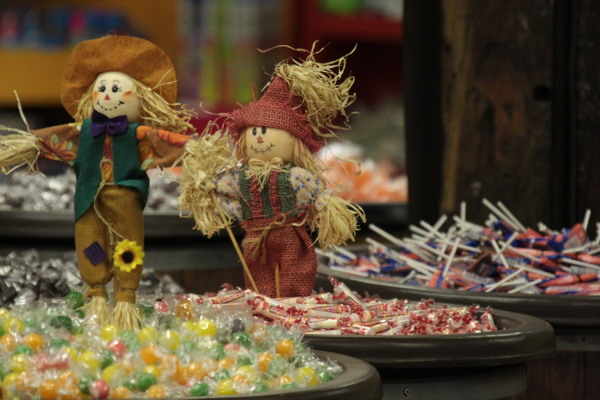
Happy Halloween! We also celebrated Anna’s birthday in Savannah. Although it was a couple days before her actual birthday, we decided that being together to celebrate was more important than marking the actual day.
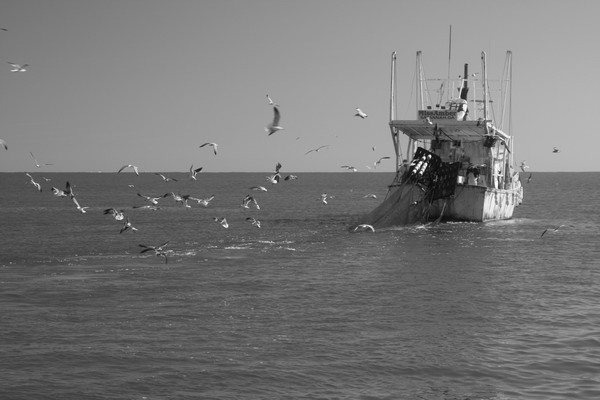
This is another shrimp boat, on our second attempt at dolphin watching.
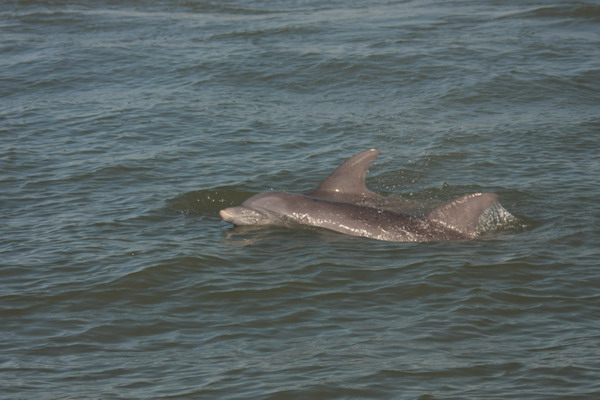
Success! But, unlike the spinner dolphins we saw in the Pacific, these bottle-nose dolphins didn’t put on quite the same show. I think they were more focused on feeding. We couldn’t blame them, and they were still fun to watch. But, despite taking MANY pictures, none were particularly spectacular.
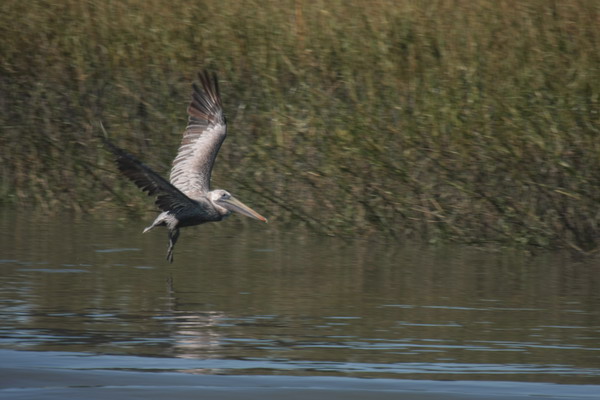
The pelicans were nearly as interesting to me as the dolphins.
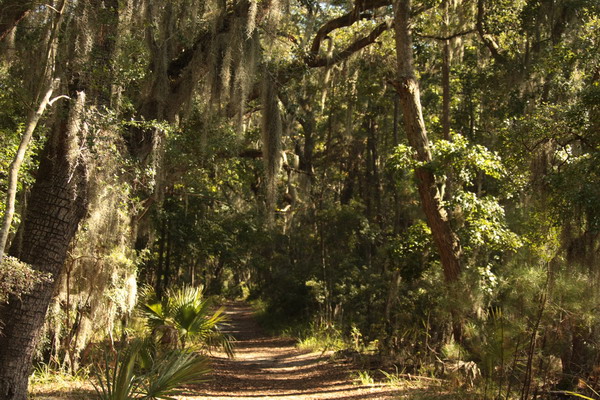
This trail gives a better idea of the flora in the region. We went hiking on trail in Skidaway Island State Park.
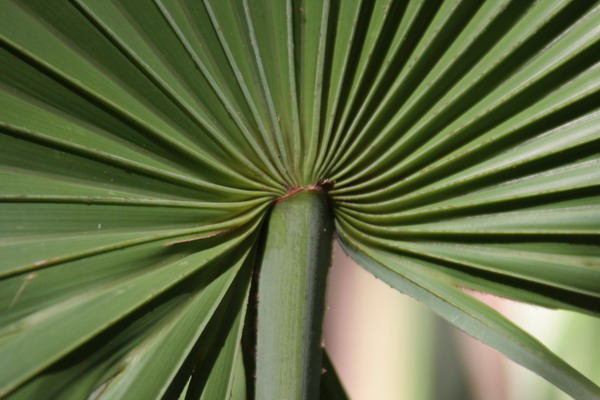
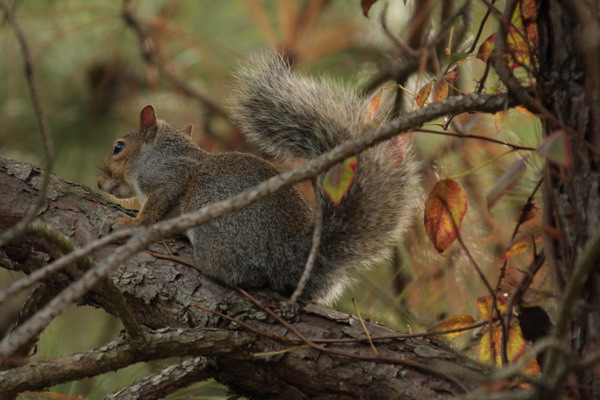

This American alligator had some serious camouflage going on.
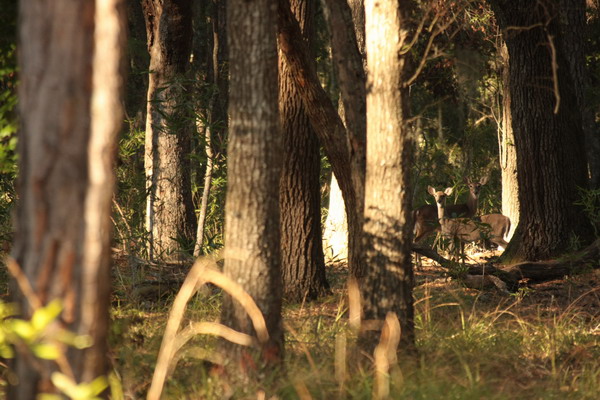
We also happened about nearly a dozen deer on our hike. These two were kind enough to stop for a moment and pose.
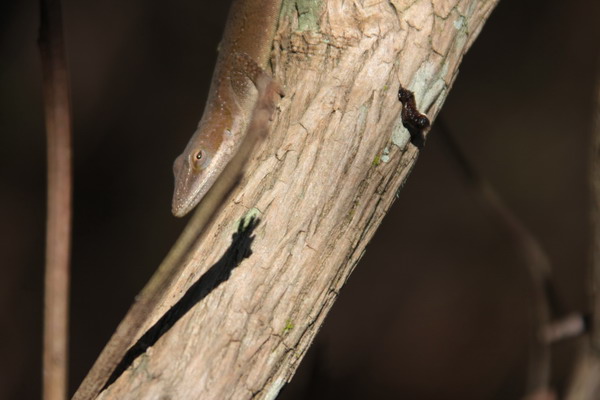
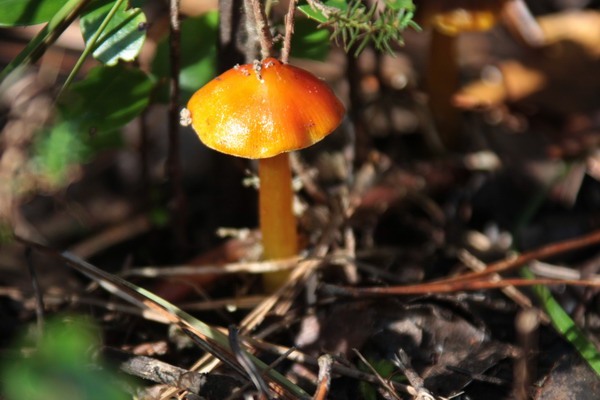
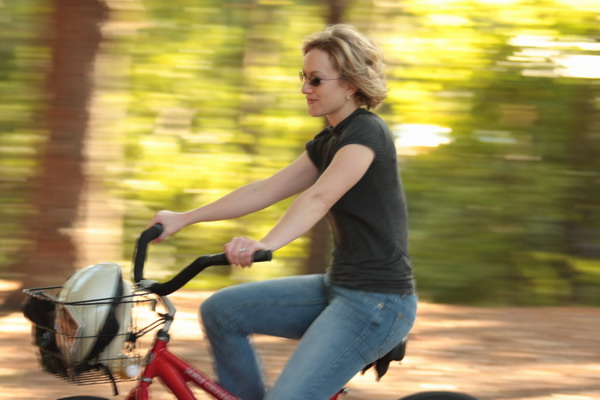
This image of Anna is from our bike trip around Hilton Head Island in South Carolina. We loved biking on the beach, lunch at a harbor, then back through perfectly manicured golf courses and ending the say with a quintessential American experience … shopping at an outlet mall (of course we bought a bunch of stuff!).
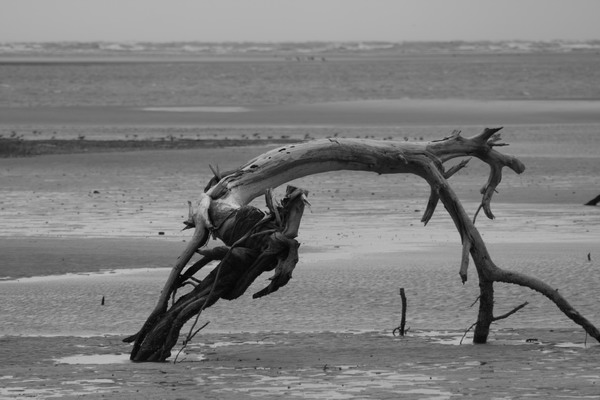
Our adventure quota was a little low on this trip. So, we rectified that with a final day kayak trip through the salt flats around Tybee. We also got out on Little Tybee Island here to wander around the driftwood and take refuge from the very strong wind, which we had to eventually face and paddle home.
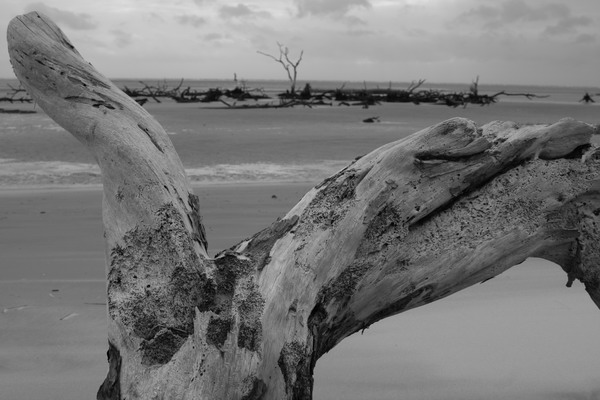
That sums up our trip together. It was a perfect experience and it was great to re-connect, relax and enjoy each other’s company. So, now, we have our own separate adventures to live for the next few months. Then, we will head off on another adventure together early next year, when I get a short break from my time in central Asia.
So, until the next adventure…
–Jim
Wisconsin Part 2 — Lakes, Family and Wedding!
One of my best memories growing up is from my time at the Wiltrout Cabin on Moose Lake. This is where my Uncle David, Aunt Cheryl and cousin Chad had a great place. We spent a number of summers on the lake, enjoying the fishing, hiking, boating, swimming and family camaraderie available. Unfortunately, my Aunt passed away a couple years ago, but Uncle David has rebuilt the cabin to immense and very plush proportions. Anna had not visited this great location and I had not seen the new log-cabin Uncle David built. So, we took a few days and paid a visit. It certainly did not disappoint!

We spent time on the water, chatting with dear Uncle David about a host of topics and most importantly just enjoying time together.
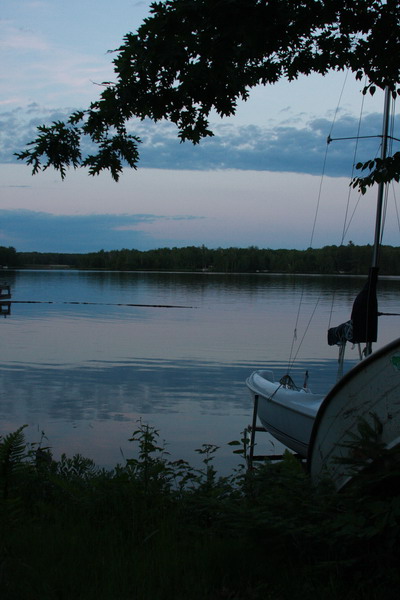
The lake and cabin have so many fond memories, I was very happy to share them with Anna.
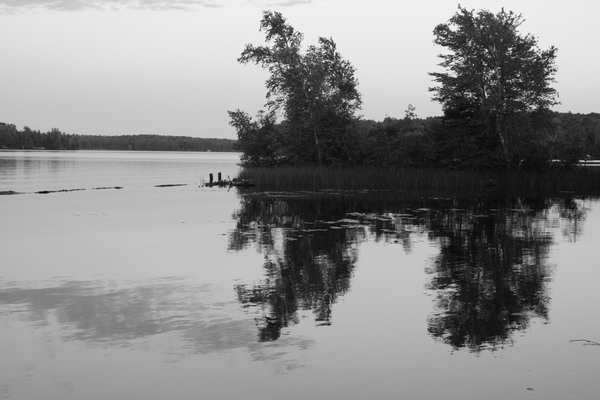
One great new addition is a pool table. This is great for all the guys who frequent the annual fall deer camp. Here is an image of Uncle David about ready to sink the 15 ball.
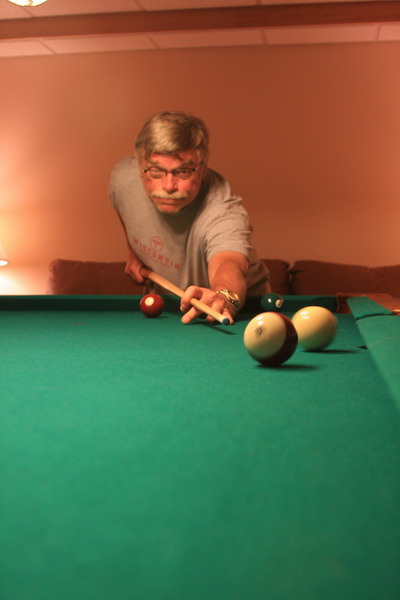
Anna too was quite the the shark.
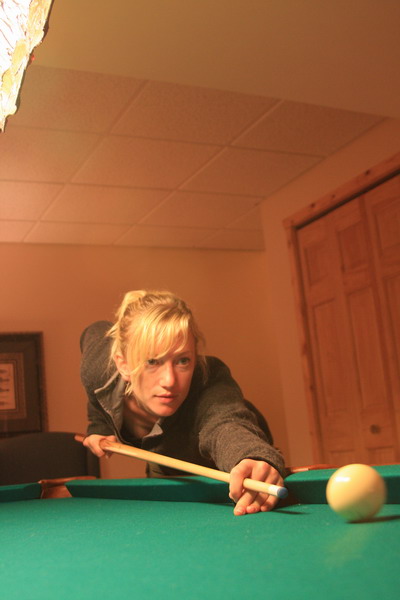
On our way up to Hayward (the closest city … about 30 minutes from Moose Lake, where the cabin is), there is a town called Cadott. This town has the claim to fame as the mid-point between the equator and North Pole (AKA 45 degrees North).
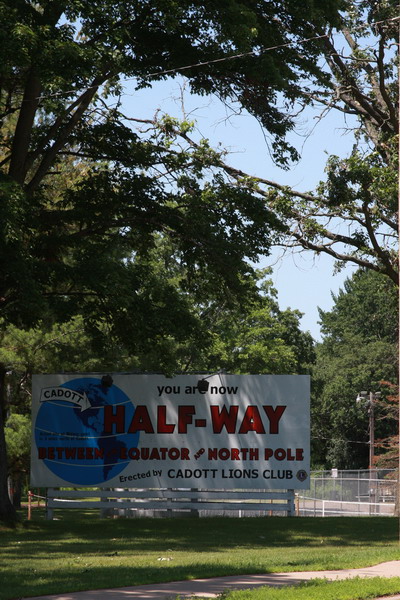
The day before Julie and Michael’s wedding, Michael genorously took the entire wedding party out on Lake Michigan to fish for salmon. It was a stormy morning and made for tough conditions, but we managed to catch a few fish. This is Patrick working on the first catch of the day. He landed a nice salmon.
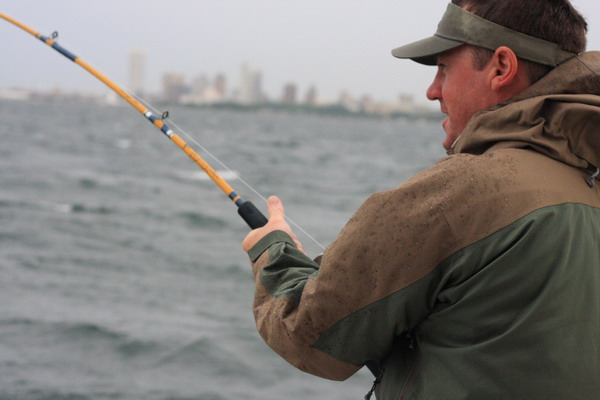
Here they are. These fish are much larger than the typical brown trout in the rivers of Colorado where Patrick normally fishes.
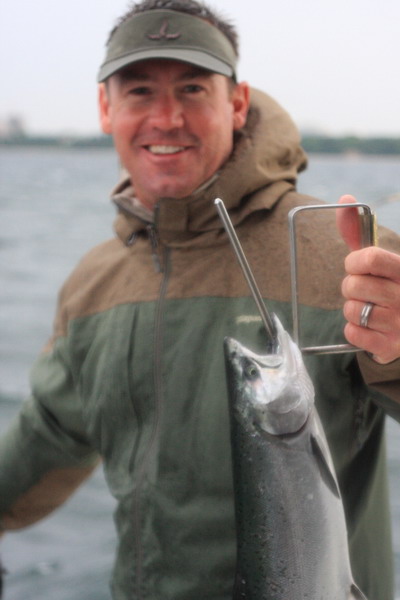
Clay was the big winner for the day and landed a couple beautiful salmon. Both were about 16 pounds and both took over a half an hour to get in the boat. We had visions of Santiago and the “Old Man and the Sea.” Fortunately, there were no sharks to spoil the booty and Clay successfully landed both fish.
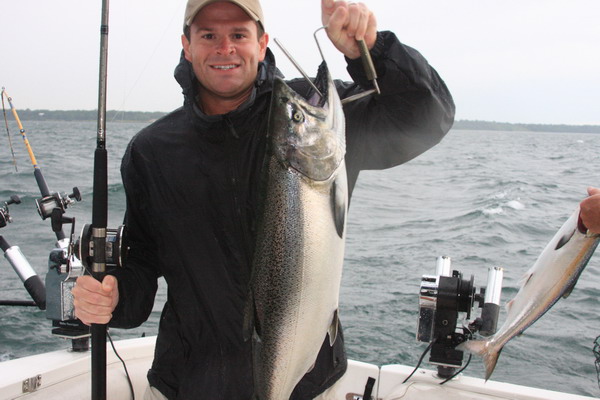
I was fortunate to catch a couple medium sized salmon as well. Of course, that is only because my father was gracious and let us young guys catch all the fish (he has the opportunity to go out on Lake Michigan at least once a year).
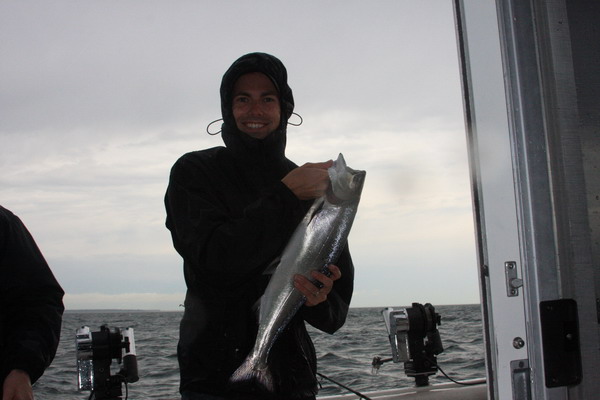
Here is Clay playing Santiago again…
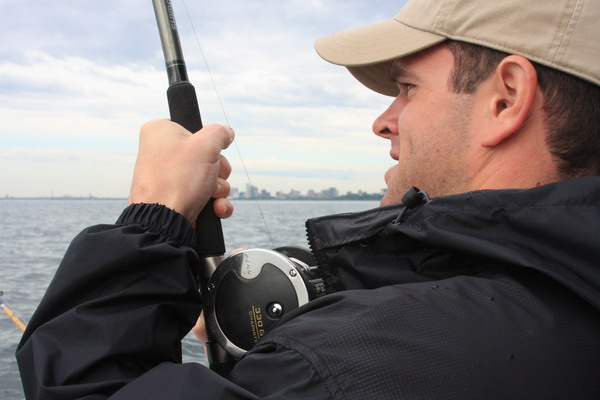
Me with my second catch of the day.
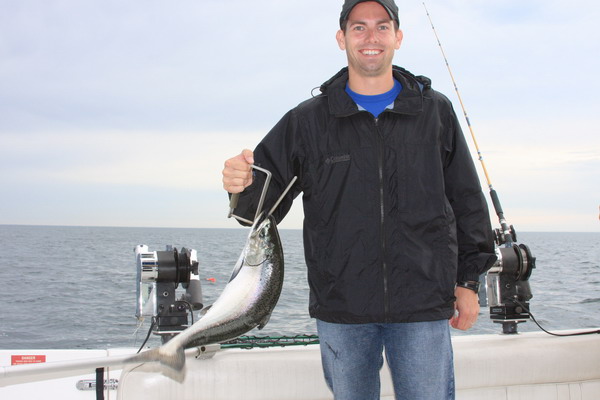
Here is the entire catch of the day. Although not the most prolific day on Lake Michigan, it was certainly rewarding. We really enjoyed our time on the lake.
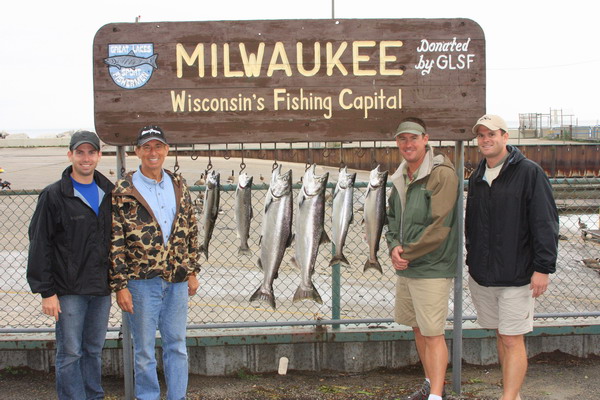
You may be wondering what happened to the man of the day, Michael. He and several other guys were on the other boat. Although it pains me to admit it, they were slightly more successful than us on the lake and wound up with 8 fish between them. 🙂 Ok, so it doesn’t really pain me, but a little friendly competition was fun.
The next day was the whole reason Anna and I were home: Julie and Michael’s wedding. Here is an image of the male cousins: Chad, T, and me.
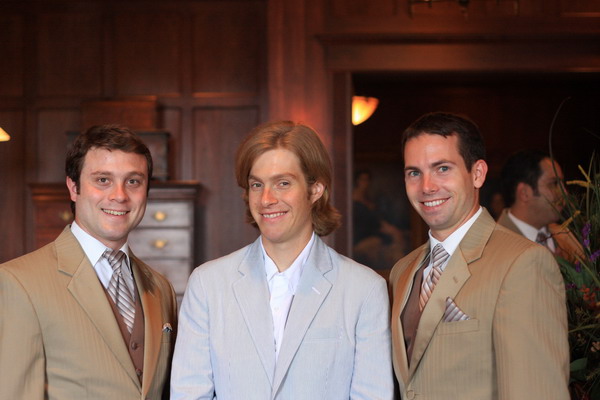
This is the groom, Michael and one of his two best men, Omar.
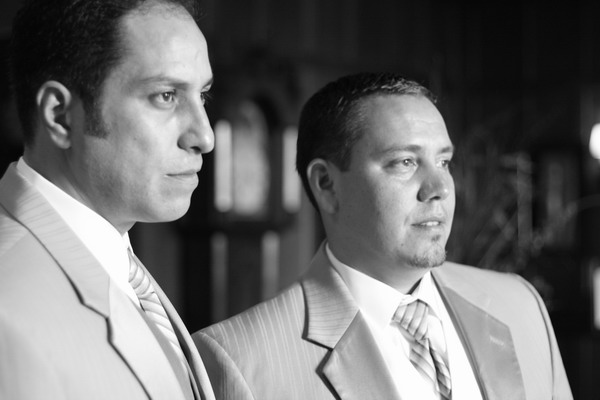
This is Michael and his other best man, Brandon, with Chad in the background.
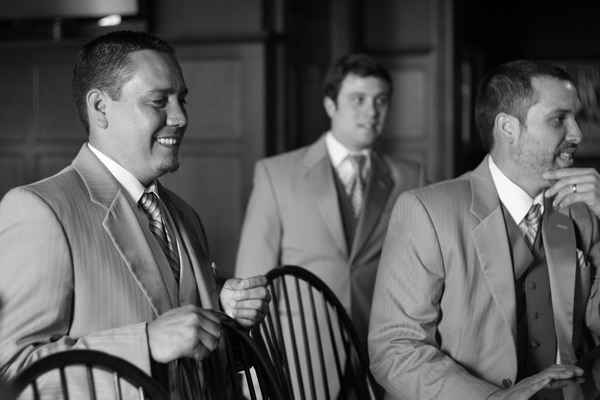
The beautiful bride, my sister Julie, on her way to meet my future brother-in-law, Mike.
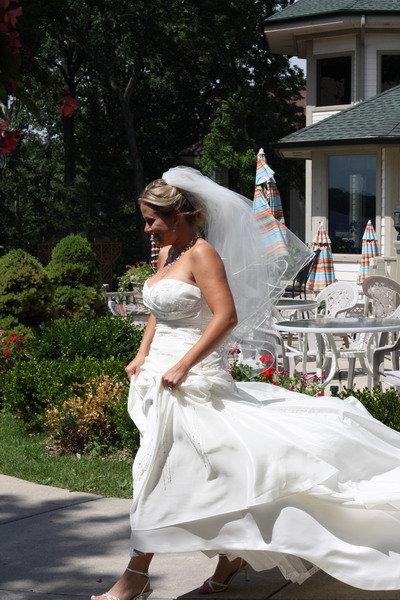
The happy couple.
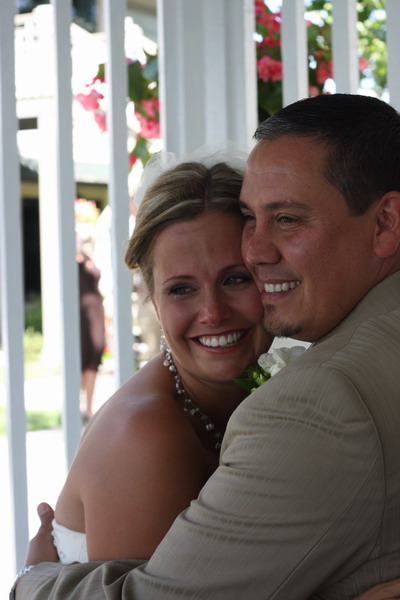
Can you tell they are happy to see each other?
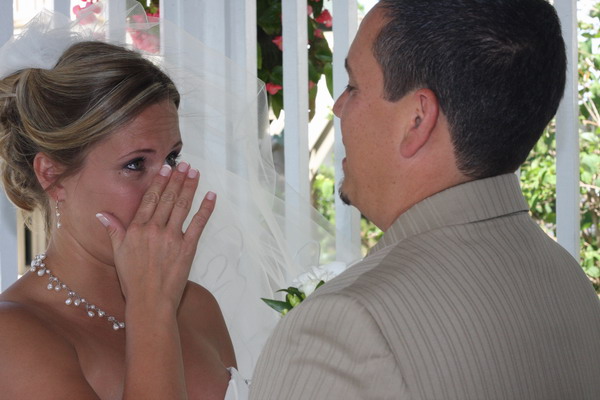
The ceremony was on the lake my parents live on, Nagawicka Lake. There was also a sailing regatta the day of the wedding.
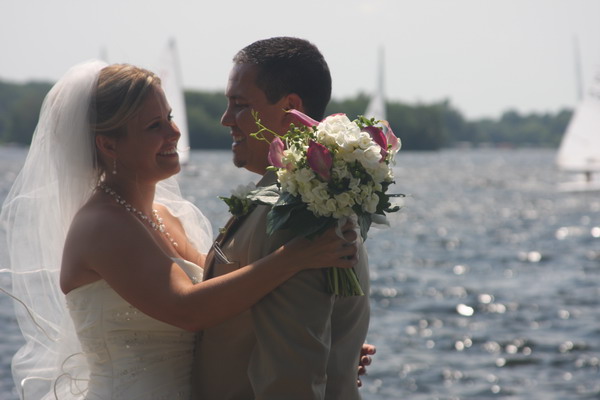
Their official photographer was very creative with her images.
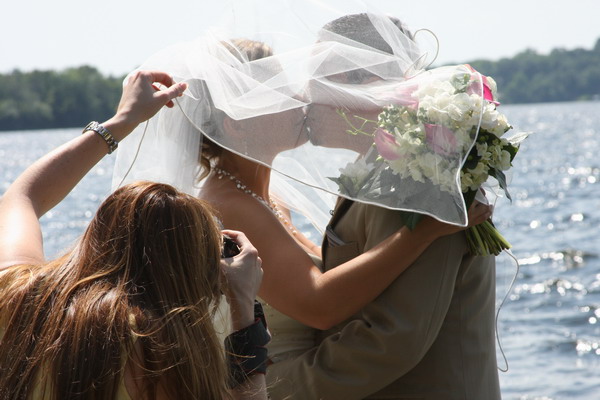
The happy couple again.

It was a great ceremony. Anna and I were proud to be a part of it. Julie and Mike make a great couple and we are certain they will enjoy their wedded bliss for the rest of their lives. We were fortunate that our schedule allowed us to partake in this auspicious occasion.
This was a fitting end to our trip to Wisconsin. A wedding and image of the symbol for the country I have sworn to defend. The next post will most likely be in my training for Afghanistan. In case I haven’t told you in person, I will be a part of one of the provincial reconstruction teams in Afghanistan for the next year. First though, we have language and cultural training at Indiana University. Then a few months of intense training in North Carolina. Finally, this fall, we will arrive in Afghanistan with the intention of aiding the Afghan people rebuild their country and infrastructure. It will be a long time and difficult mission, but I am excited to be in a place where history is being made with the opportunity to help positively influence the outcome.
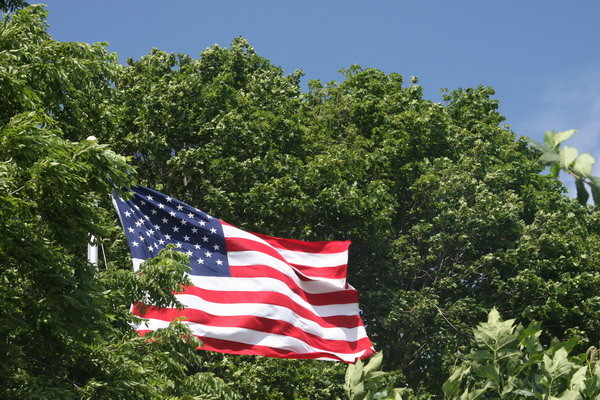
So, until the next adventure…
–Jim
Wisconsin Part 1 — Fireworks, Family, and Baseball
When Anna and I stepped off the plane from Germany back in Wisconsin (after almost a 2-year absence for me), we were met by my parents. It was the 3rd of July and Milwaukee had a huge fireworks display planned. So, we hopped in the car and headed to the Lake Michigan shore to watch the festivities.
Once we arrived, the Quadracci Pavilion of the Milwaukee Art Museum greeted us. It’s a beautiful addition to the museum created in 2001 by architect Santiago Calatrava.
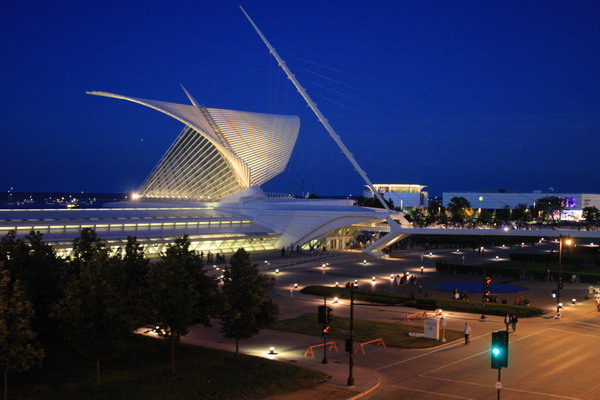
Here are a couple images from the 10,000 explosions that reportedly cost over $400,000 over 45 minutes with three distinct segments.
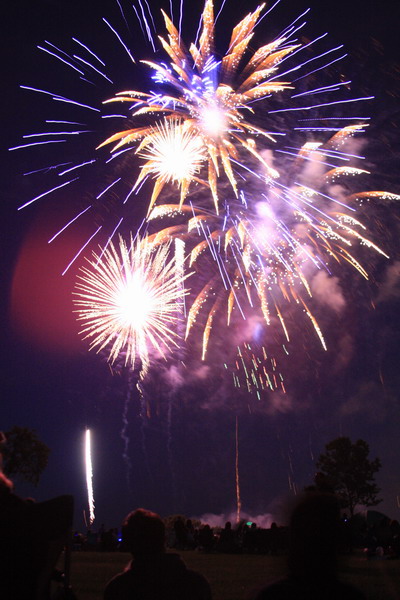
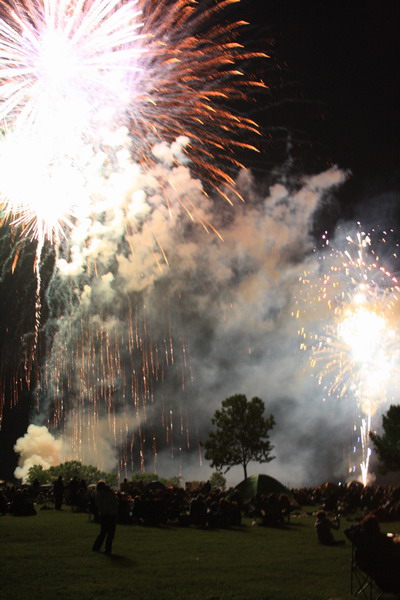
It’s amazing what you can find in your own back yard. Especially when you have parents that have a green thumb!
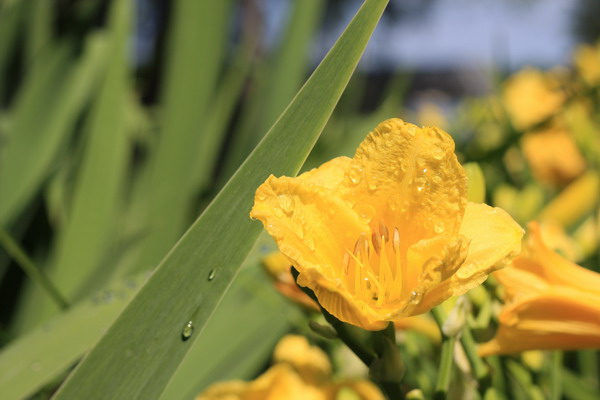
This next set of images are from Anna’s family. We spent the day with Sarah and Jason, Anna’s sister and brother-in-law, along with Susan, and her children, Anna’s oldest sister.
This is Caidub, Susan’s oldest son with a monarch butterfly.
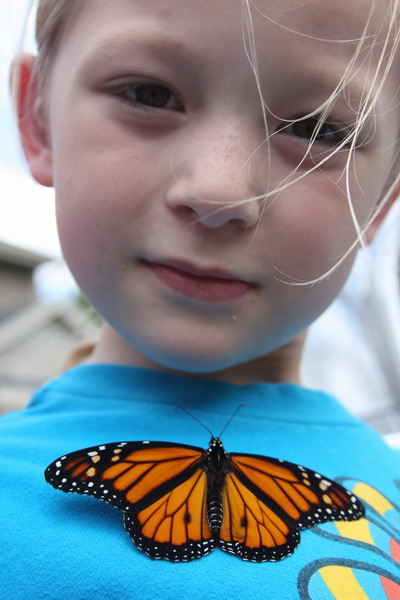
Here is Grant, our Godson.
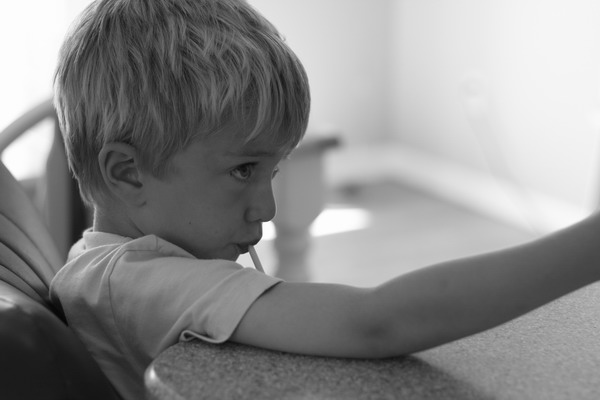
This is Griffin and he’s quite a character already!
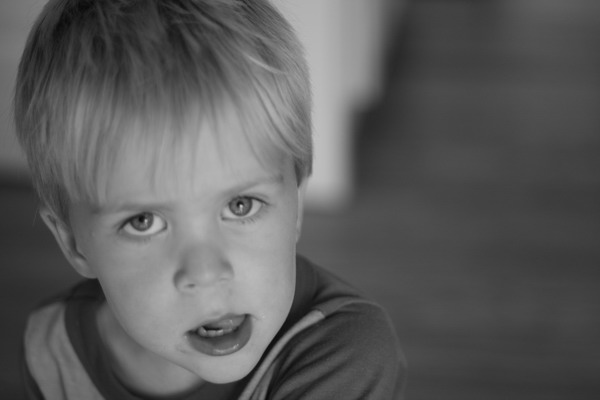
This is Jason, my brother-in-law looking quite dapper in a image made by Sarah. 🙂
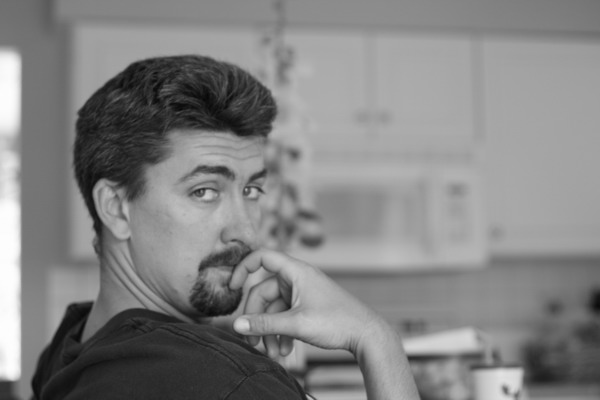
Another image by Sarah: Anna consoling Grant…
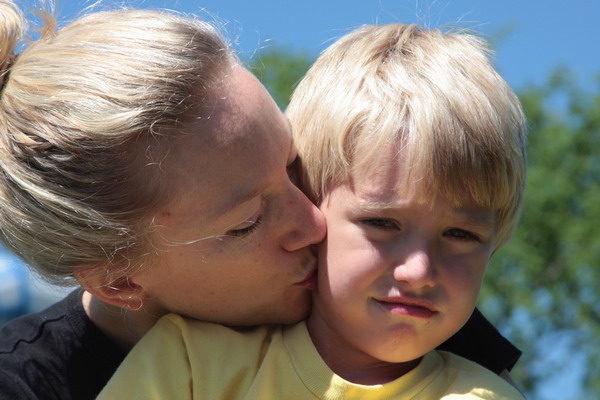
This is Gracie, about to release another new-born monarch butterfly.
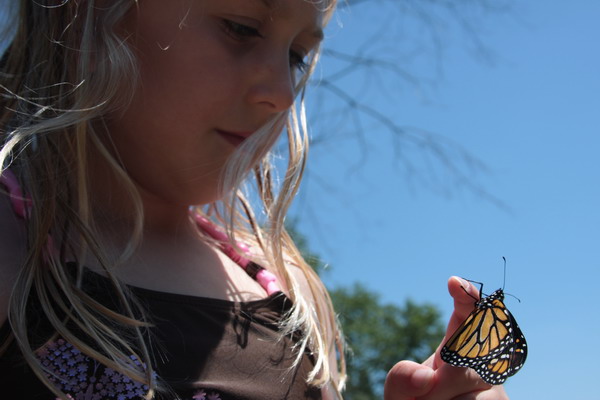
This is the wonderful Miller family in their bi-annual family portrait I helped capture.
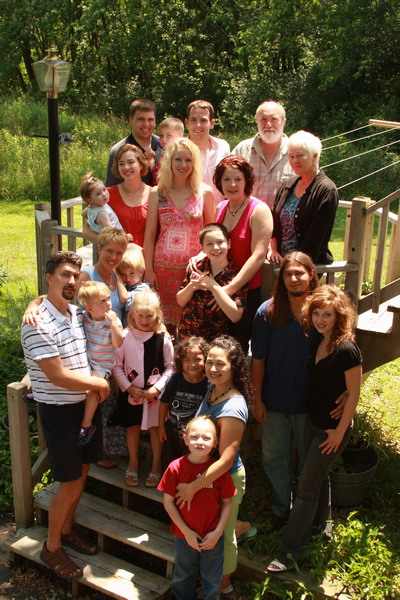
The Six Miller girls, although all but two have new names these days.
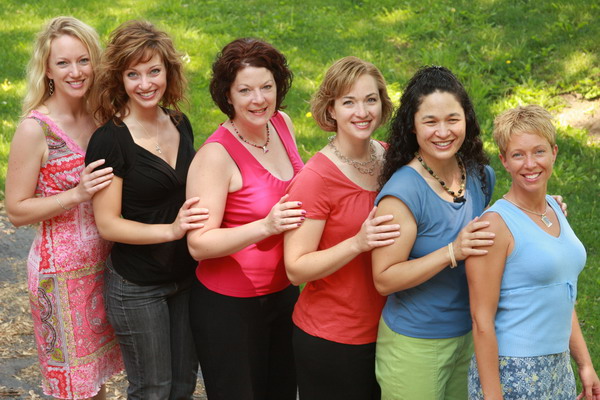
Sarah being silly, as usual. 🙂 Aren’t the Miller girls cute??
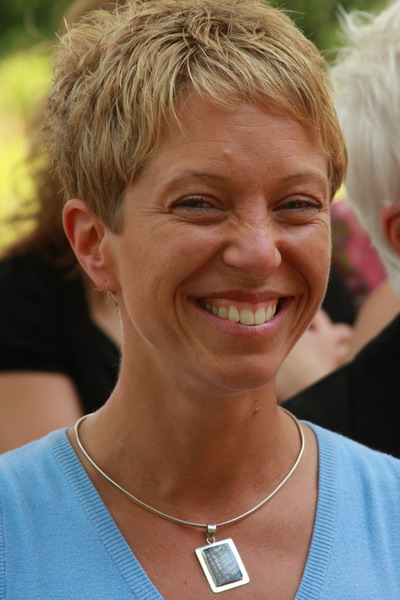
Another image of the Miller girls with their matriarch, Chris.
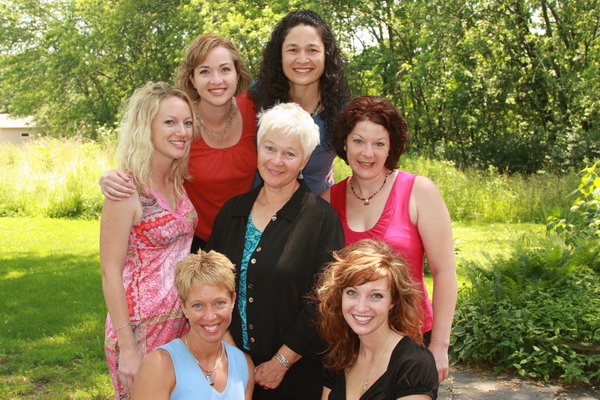
The eternally effervescent Emma.
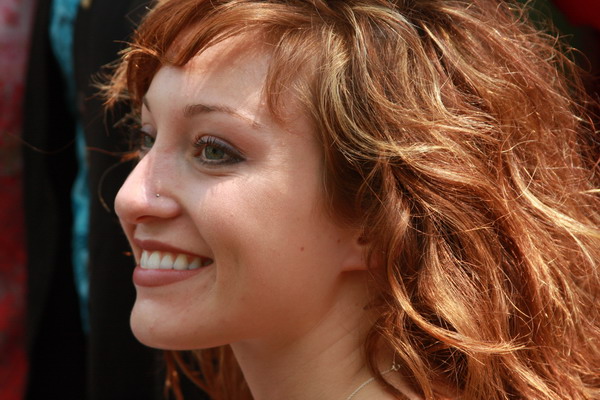
The leader of the flock and my mother-in-law, Chris.
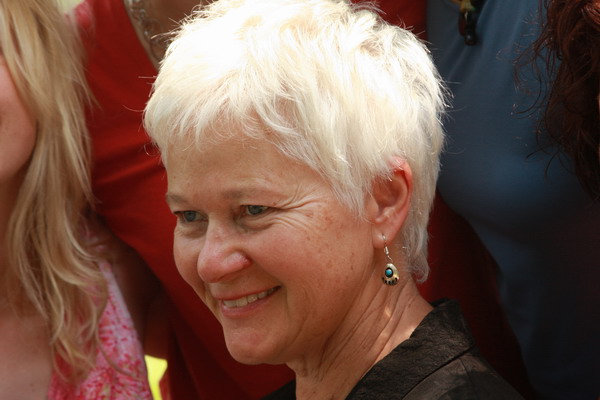
The most beautiful woman in the world…
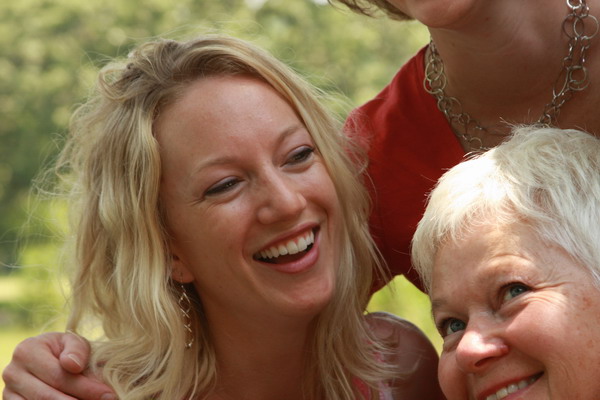
Since it had been a couple years since I was in Milwaukee, my parents wanted to take me out to the ballgame. I hadn’t been to the new Miller Park (no relation to my great in-law family). We watched the Milwaukee Brewers take on the Colorado Rockies.
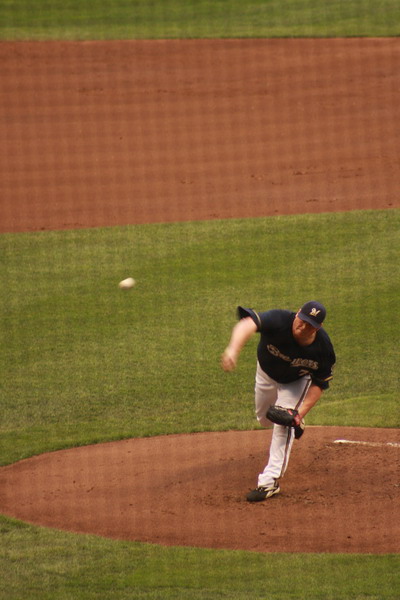
It was a great game with lots of intensity.
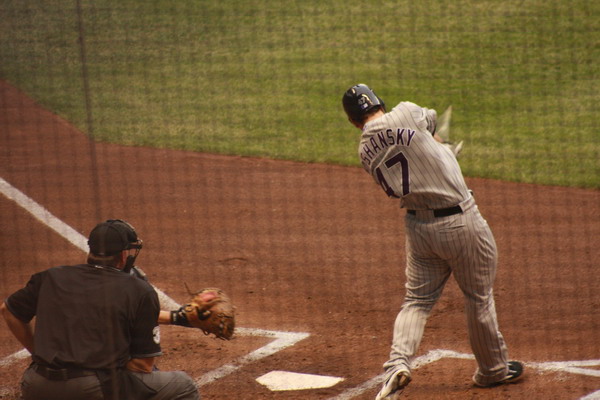
Unfortunately, the Brewer’s late-game surge was insufficient to win the day, but it was a great game to watch.
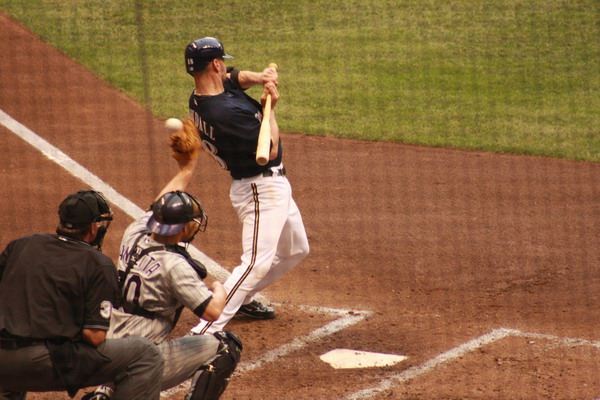
My parents were very thoughtful and requested a giant screen message to me, my Airmen and Soldiers. We are currently training for a year-long mission in Afghanistan (for those who don’t already know). It was a great reminder that everyone back home is pulling for us.
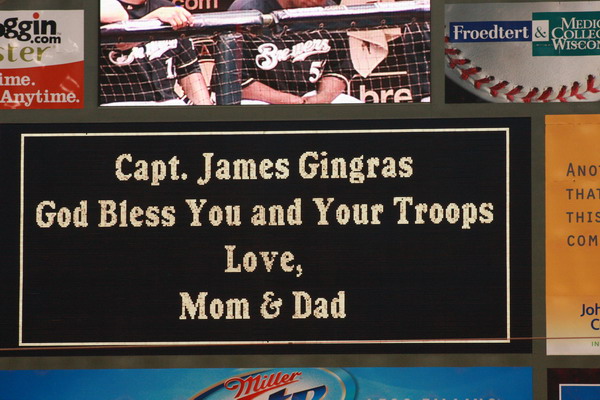
I will finish this post with a couple classic Wisconsin images. Although Wisconsin used to lead the nation in % of over-weight people, they have slipped to about middle of the pack. Currently, Mississippi leads the way with overall fatness, and Colorado is the leanest. However, that didn’t stop a number of large people from attending the game. It was quite a contrast from Europe.

Drinking Miller Lite in Miller Park watching the Milwaukee Brewers.
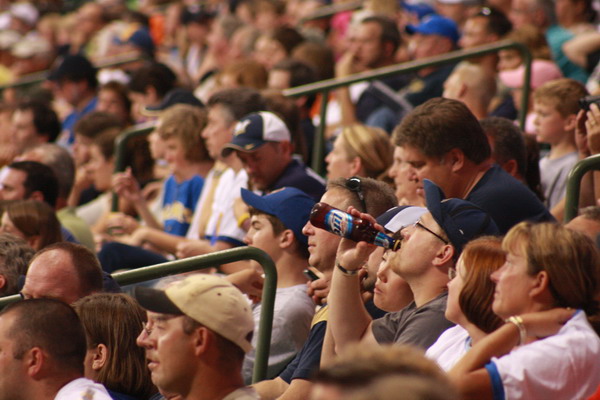
It has been too long since we were in Wisconsin. I really enjoyed my first few days back in my native state.
Next up is the our trip out to the lakes and most importantly, Julie and Michael’s wedding.
So, until then…
–Jim
Swiss Alps
For our last European vacation together (for a while), we decided to visit the Swiss Alps around the city of Interlaken. Since this is the same area we visited last year, we decided to try a different valley nearby and stayed in the village of Grindelwald. As you may recall, we stayed in the carless village of Mürren last time. Grindelwald is certainly laden with more cars and consequently tourists, it is still spectacular.
On the drive in, this is the sight that greets visitors, the Thunersee.
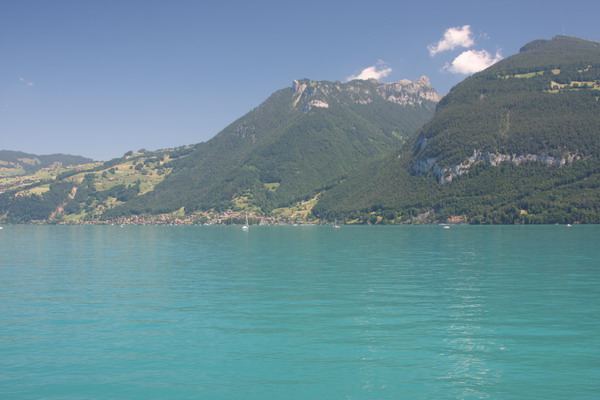
Jen got down to test the water. We decided to hold off on swimming, but it was very pretty water.
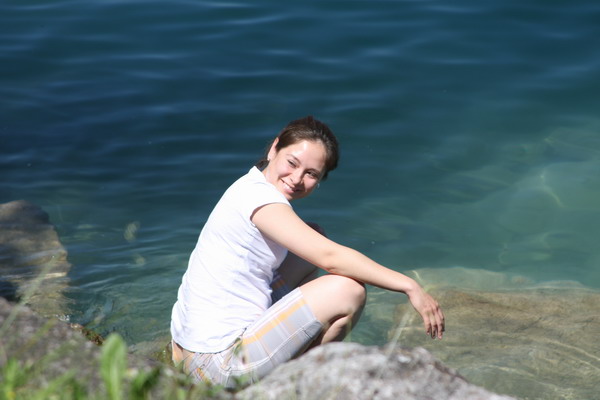
These next few images are from our drive.
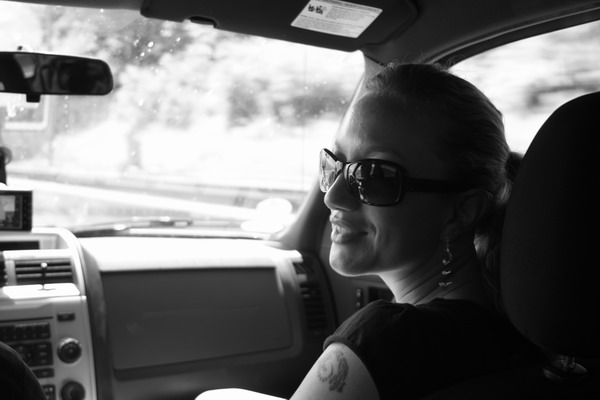
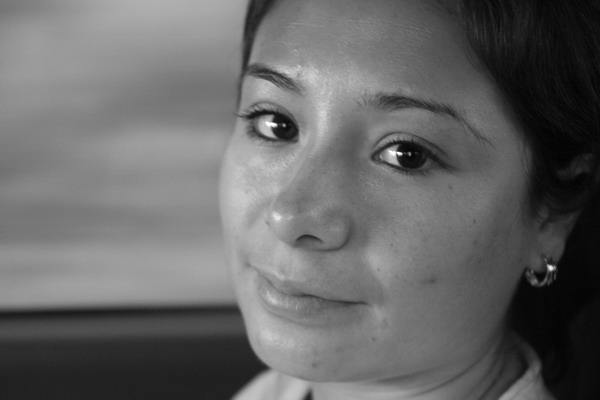
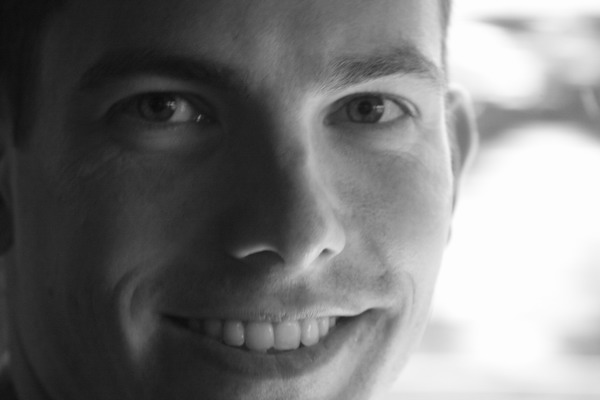
When we arrived in the Grindelwald valley, this view of the Eiger Mountain was amazing. It rises 10,000 feet out of the valley floor to it’s summit at over 13,000 feet.
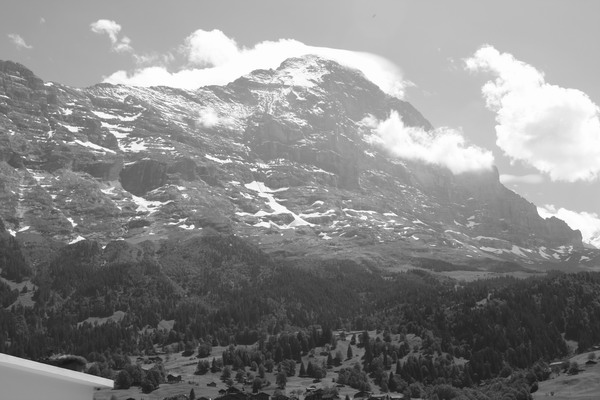
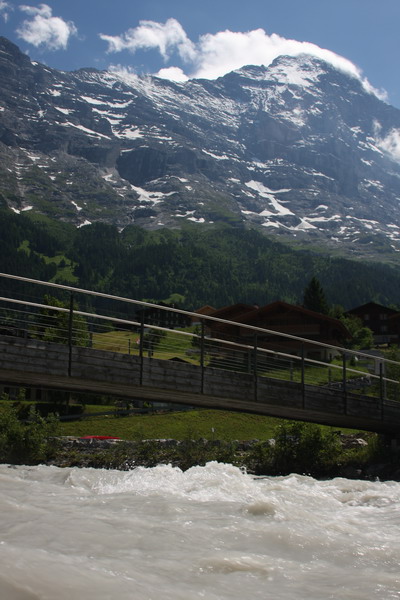
Another image of the picturesque Grindelwald.
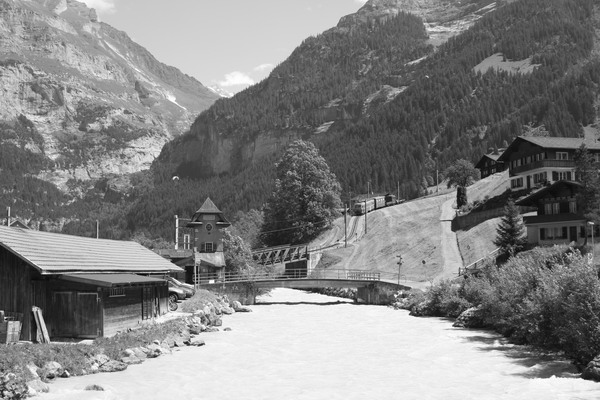
Another typical Swiss home.
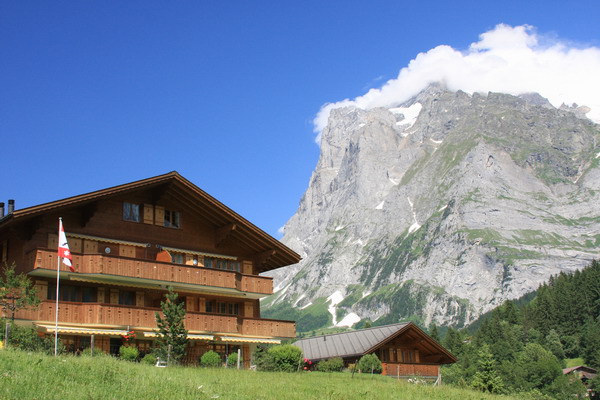
We hopped on one of the many gondolas for a hike in the mountains.
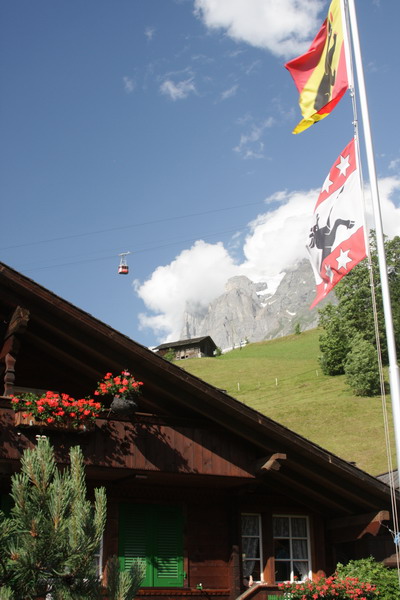
This is the view from inside the gondola.
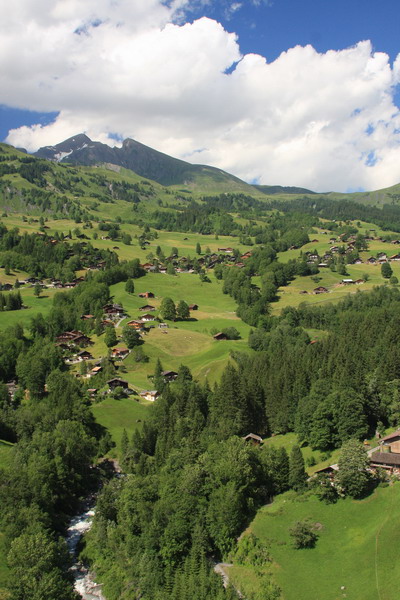
At the top of the lift, this cow said hi with the ever present cow bell. What you can also see in the right foreground is a land luge course, called a rodelbahn. To give you an idea of what it’s like, this YouTube video does a nice job Swiss Rodelbahn Video
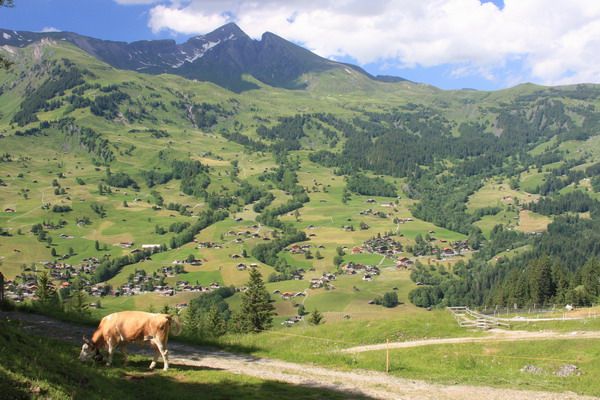
After the thrilling luge ride, we decided to stretch our legs and took a hike along one of the many trails in the area.
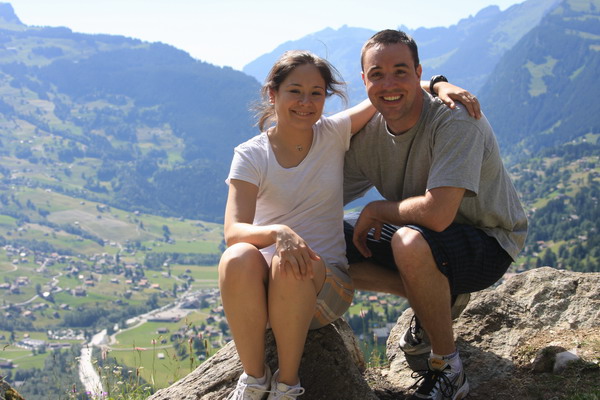
What hike would be complete without a picture of flowers??
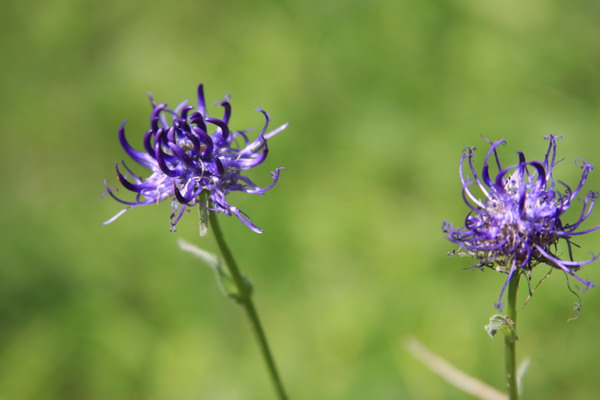
Paragliders were all over the valley.
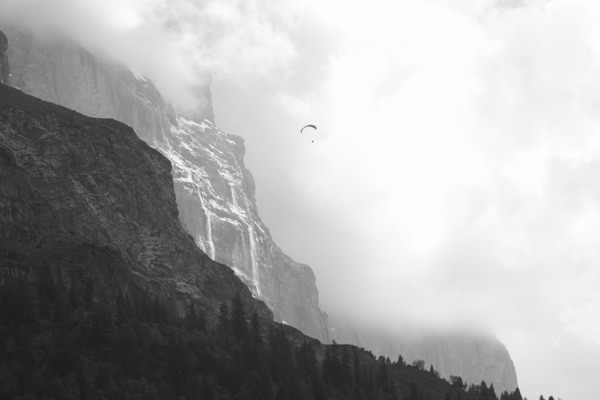
More typical Swiss architecture. All of us agreed it would be great to live here.
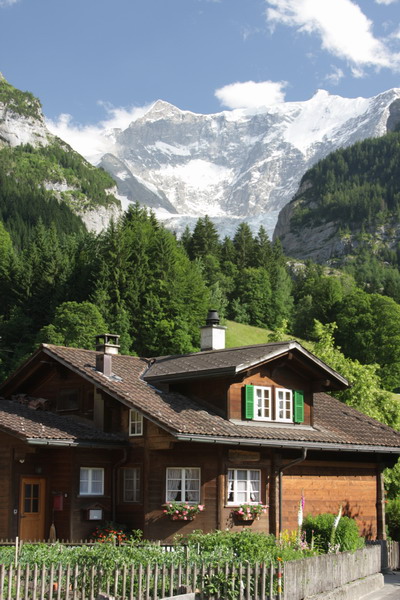
These next two images are from our hotel room. Not a bad view of the Eiger mountain.
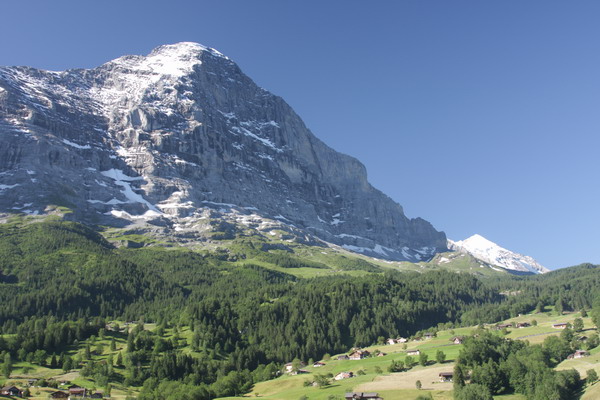
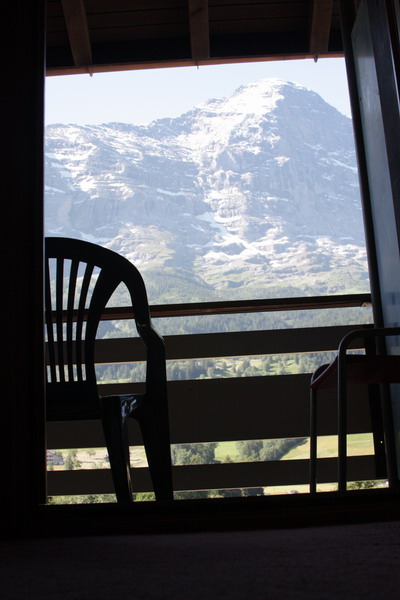
We also hiked along this precariously carved trail up the glacier gorge, Gletscherschlucht.
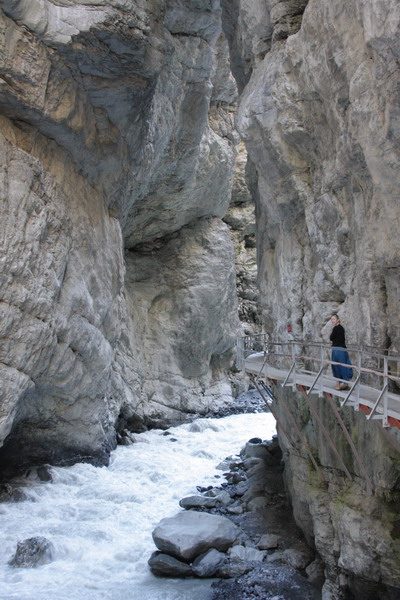
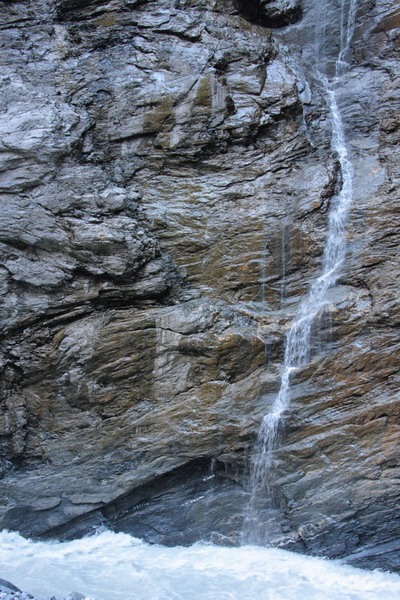
Since our adventure quota wasn’t quite filled, we decided to next launch ourselves off a cliff. Fortunately, there are many companies that are willing to help with that endeavor via paragliding. The one we chose had us load into another gondola and ride up 1,100 meters higher (4,000 feet). As you may recall from our last Swiss trip, we also went paragliding then. We liked it so much, we came back for more.
This images gives you an idea of what we were about to do.
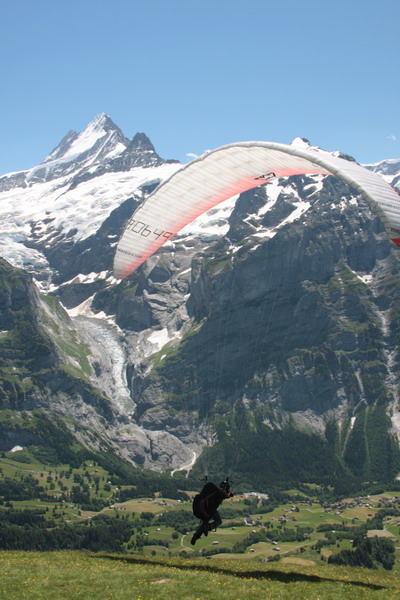
This is the view from the launch point.
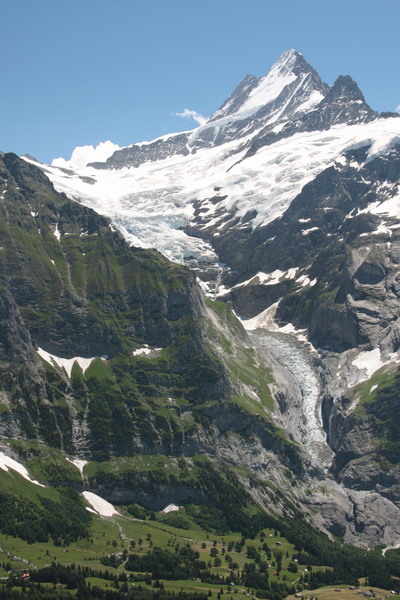
Here is Jen, all set to go.
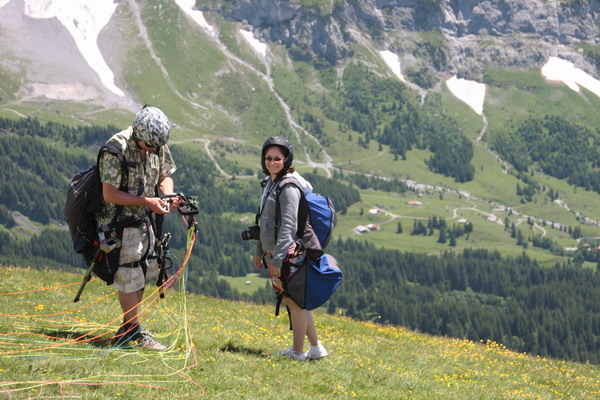
Jen and her pilot running off the cliff…
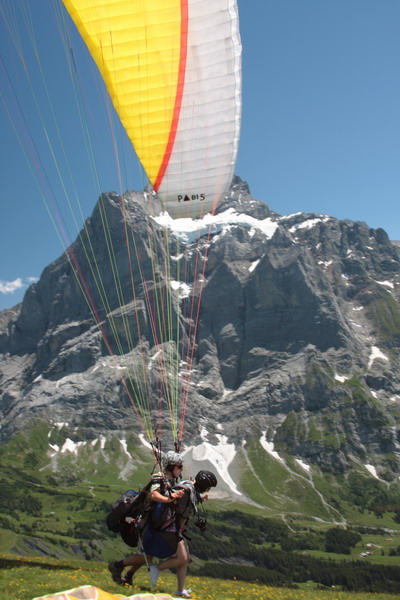
This is an image looking back at the launch point. If you look very closely, you can see Andy about ready to run off the mountain.
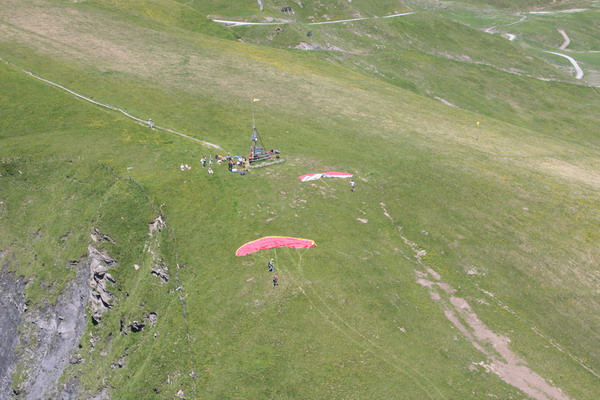
This is an aerial view of the rodelbahn. I think the cow is still there with her bell.
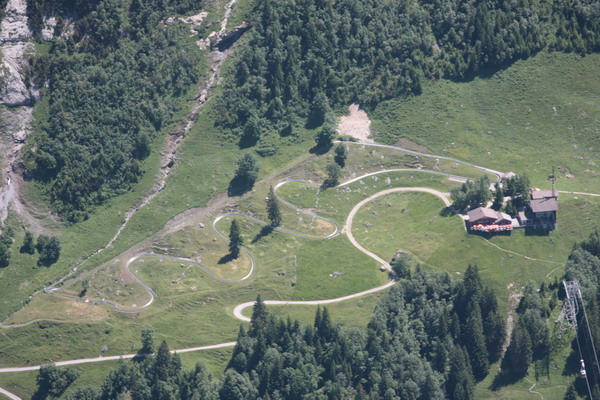
These next three images are all of Anna flying.
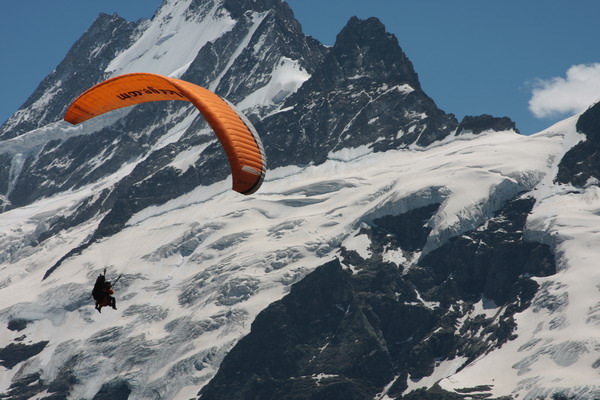
Anna made it safely back to earth and again walks with a bit of a swagger.
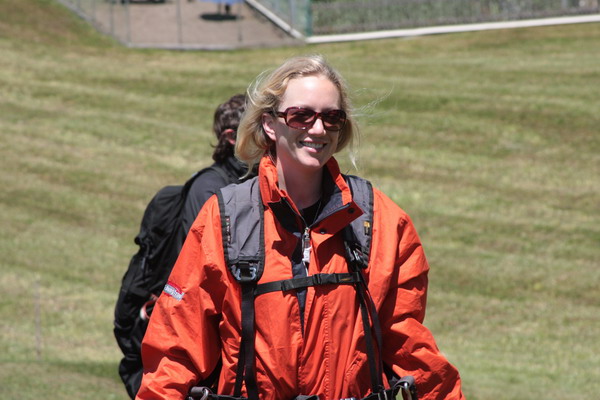
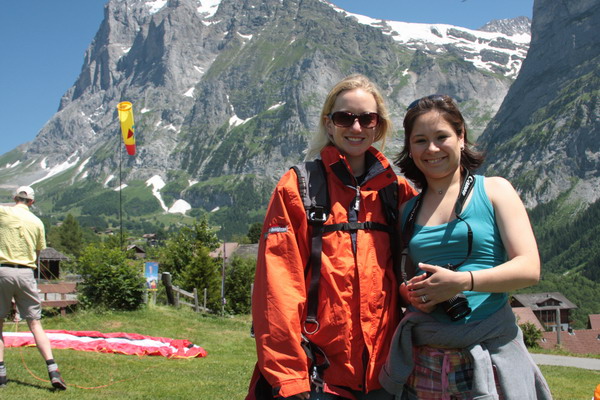
Now, here comes Andy under the red canopy.
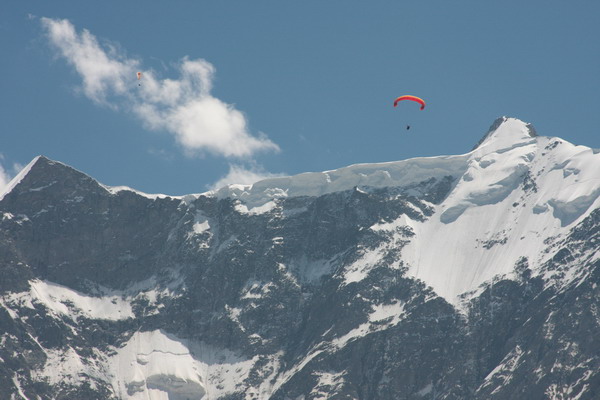
Get ready to land…
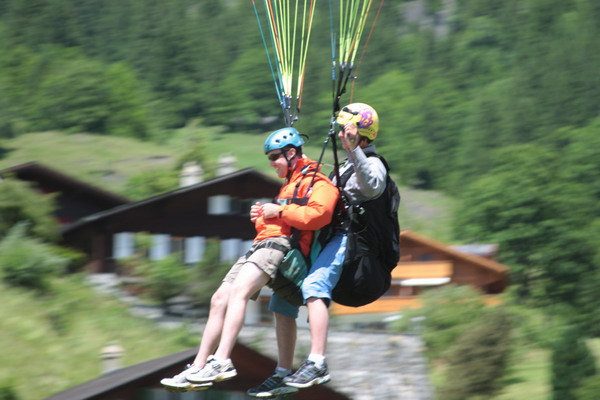
And touchdown.
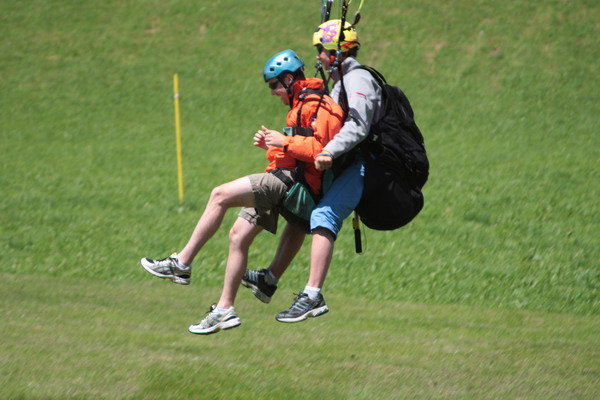
Now, it’s Andy’s turn to look back at the mountain valley he just conquered.
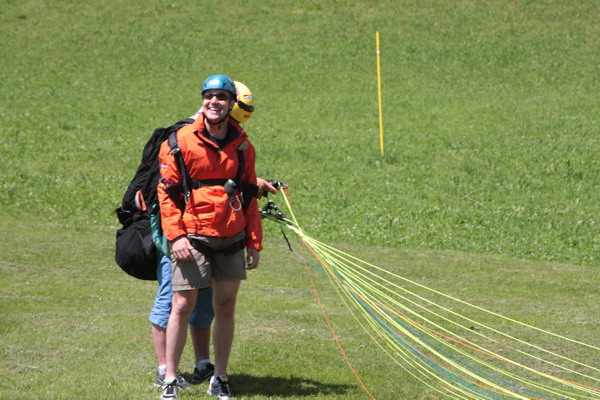
A further example of that great architecture.
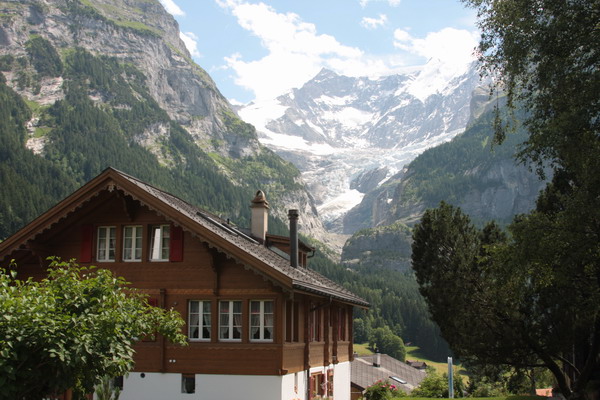
Our final stop was for lunch on the Thunersee.
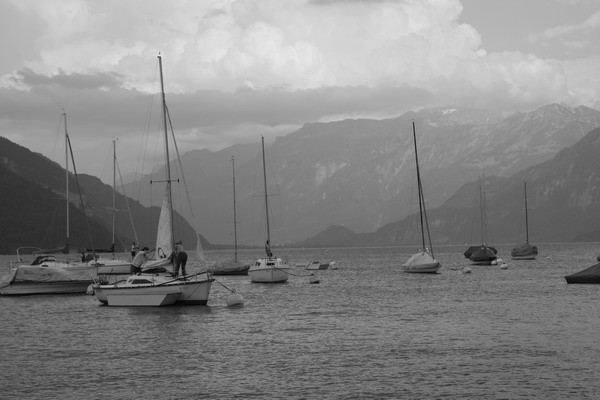
Yet again, it was an amazing trip with some of our best friends. We only wished we could have stayed longer. Perhaps when I return.
So, until the next adventure…
–Jim
